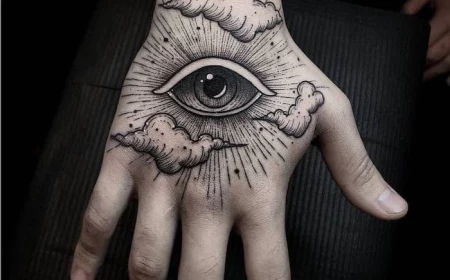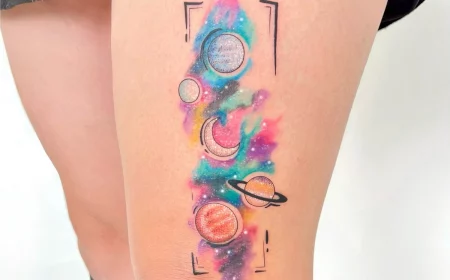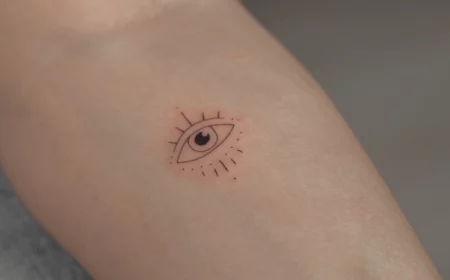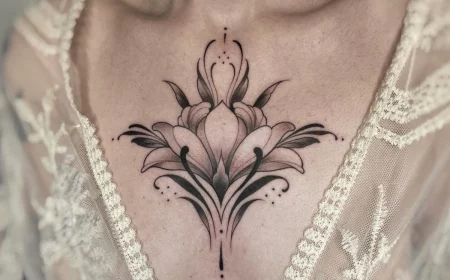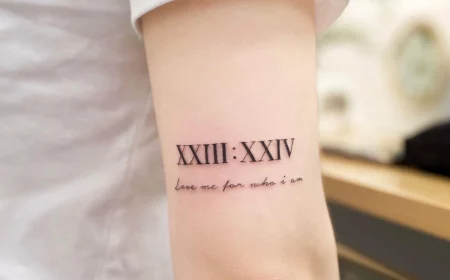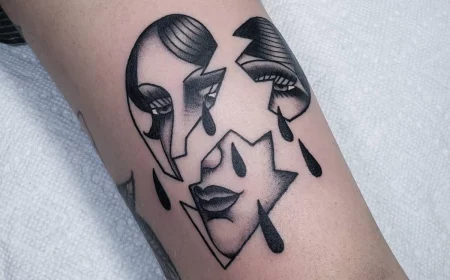Thinking About a Mandala Tattoo? Here’s Everything You Need to Know
I’ve been tattooing for a long time, well over a decade now. I’ve seen trends flash and fade, but some designs just stick around. The mandala is definitely one of them. There’s something about their symmetry and beauty that people just connect with. They sit on the skin with a sense of purpose and balance that’s hard to ignore. So many of my clients walk in wanting a mandala, and they often have this gut feeling that it means something deeper, even if they can’t put their finger on exactly what.
In this article
My job goes way beyond just putting ink to skin. It’s really about helping someone wear their story or their values on the outside. And honestly, with mandalas, that feels especially true. These aren’t just pretty, intricate patterns; they’re deeply rooted in Eastern traditions as symbols of the universe and tools for focus. As an artist, I feel a real responsibility to get that right—not just the technical skill to make it look clean, but also the respect for its history to make it feel meaningful.
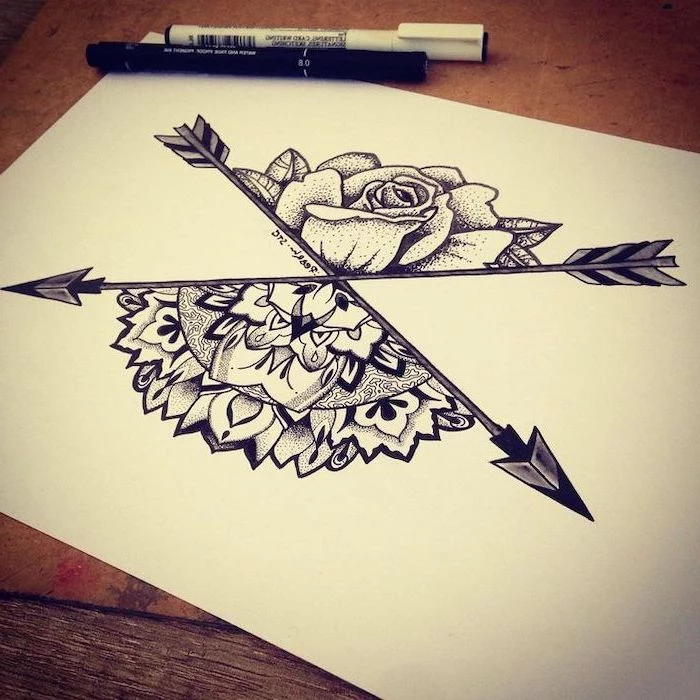
So, this guide is for you, whether you’re just starting to dream about a mandala tattoo or you’re ready to book your appointment. I want to pull back the curtain and share what I’ve learned from thousands of hours in the shop. We’ll get into the nitty-gritty of how these are designed and tattooed, and we’ll touch on the symbolism in a way that’s respectful. This is all about helping you make a great choice for a piece of art that’s going to be with you for life.
The Blueprint: Why Mandalas Work (or Don’t) on Skin
At its core, a mandala is a geometric design. The name comes from the Sanskrit word for “circle,” but it’s so much more than that. It’s a symbol of wholeness, cosmic order, and balance. Translating that perfect balance onto skin? Well, that’s the real challenge. Skin isn’t a flat canvas; it’s a living, breathing, curved surface that moves and stretches.
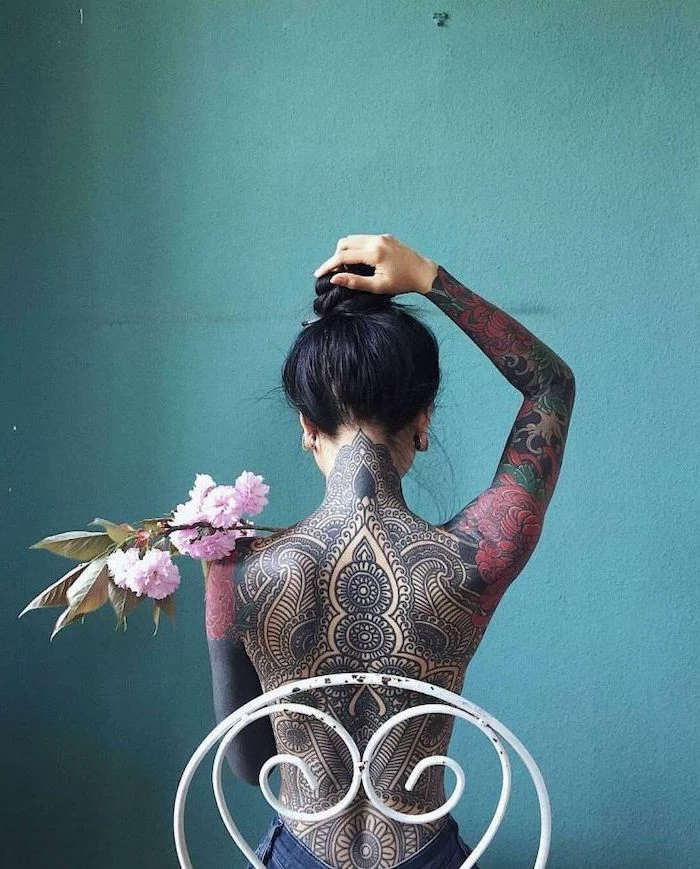
The very first thing I talk about with a client is placement. A perfect circle on my iPad will immediately look like a weird oval on a shoulder cap once you start moving your arm. My job is to think like a sculptor and anticipate how the body will change the design. For a forearm, we might actually design a slight oval that looks like a perfect circle when you’re facing someone. For a big back piece, we have a flatter, more stable area to work with, so we can go for a massive, truly circular design that becomes a stunning centerpiece.
The precision here is no joke. If the symmetry is off by just a millimeter, the whole piece can feel… off. That’s why a flawless stencil is the most important step. A common mistake I see is artists trying to slap a big stencil on all at once; it almost always creates a wrinkle or distortion. The pro move is to find the dead center, mark it on the skin, and then smooth the stencil out from that point. This pushes any air bubbles or warps to the edges where they matter less.
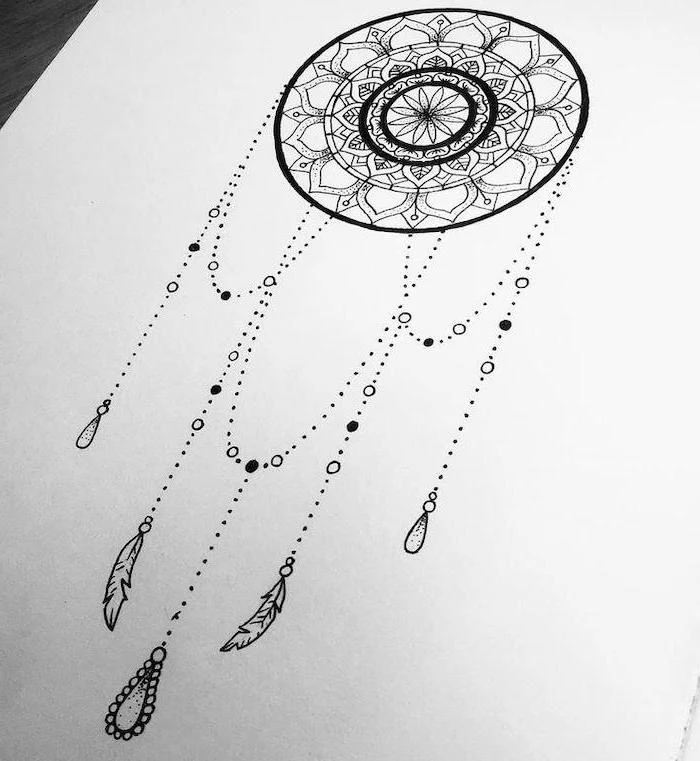
Inside the Craft: The Techniques Behind a Clean Mandala
Nailing a crisp mandala tattoo is less about wild artistic flair and more about intense technical focus. Every single line has to be perfect. Every dot has to be deliberate. Here’s a peek into the methods we use to make that happen.
Stencil and Lining
It all starts with a digital design, usually made in a program that helps lock in perfect symmetry. Once you approve it, we print it onto a thermal stencil. Getting that stencil onto the skin is critical. I always have the client stand in a totally natural, relaxed pose. If you’re tensing your bicep when the stencil goes on, the tattoo is going to look a little wonky when your arm is relaxed. I learned that lesson the hard way early in my career—a geometric piece looked incredible when the guy flexed, but a bit distorted when he didn’t. Lesson learned!
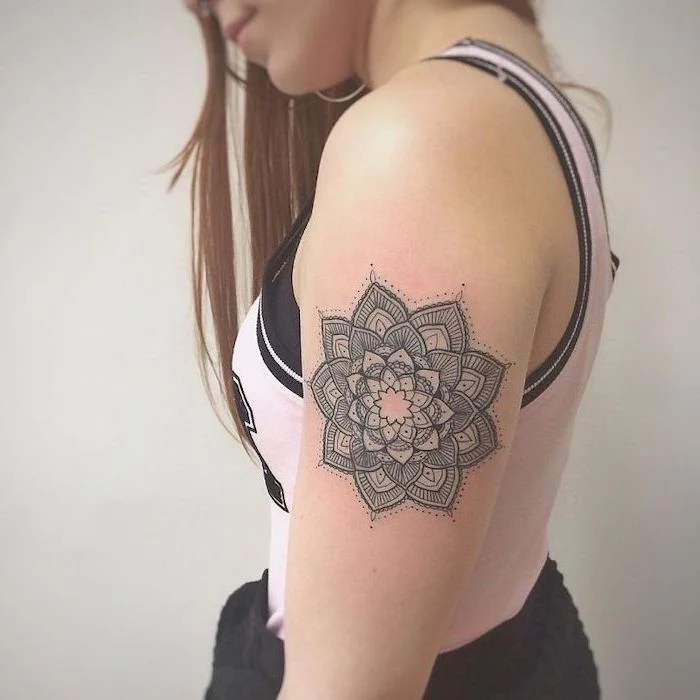
For the linework, which is the skeleton of the whole design, we choose our needles carefully:
- A 3-Round Liner (3RL) is my workhorse for most of the delicate interior lines. It’s a tight grouping of three needles that gives a fine, but still solid, line that will hold up over time.
- A Single Needle is for the most impossibly fine details. To be frank, I use it sparingly. It creates a beautiful, ethereal line, but it’s a high-risk, high-reward tool. If the ink isn’t put at the exact right depth in the skin, the line can either fade away during healing or “blow out,” which is when it blurs under the skin.
- A 5 or 7-Round Liner (5RL/7RL) comes out for the main frame—the outer circle or major structural lines. It gives the tattoo a solid foundation and helps it look bold and clear from a few feet away.
Let’s Talk Shading: Dotwork vs. Smooth Black and Grey
Shading is what gives a mandala its personality and depth. There are two main styles, and your choice completely changes the vibe of the tattoo. No table can really do it justice, so let’s break it down.
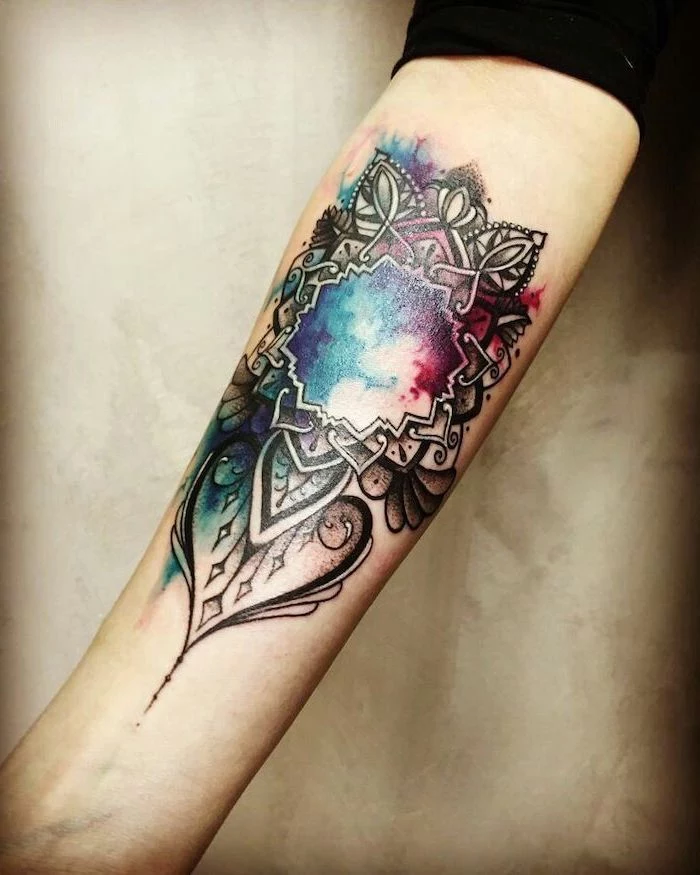
Dotwork (or Stippling) is hugely popular for mandalas, and for good reason. Instead of smooth blending, we build up tone and texture with thousands of tiny dots. The process is slow and meditative; you can hear the machine making a soft, fast ticking sound. Lighter areas get sparse dots, while darker areas are packed with dense, overlapping dots. From my experience, clients find dotwork to be less painful than traditional shading. It’s also a bit gentler on the skin, which can make for a smoother healing process. The final look is soft, textured, and almost magical.
On the other hand, you have Smooth Black and Grey. This is the classic approach, using a wider needle grouping called a
Inspiration Gallery
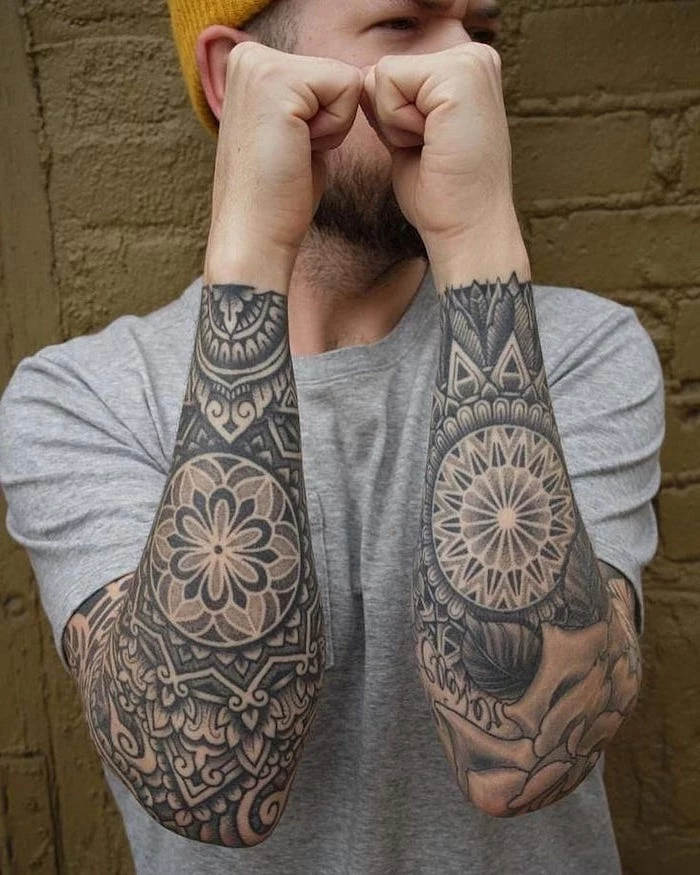
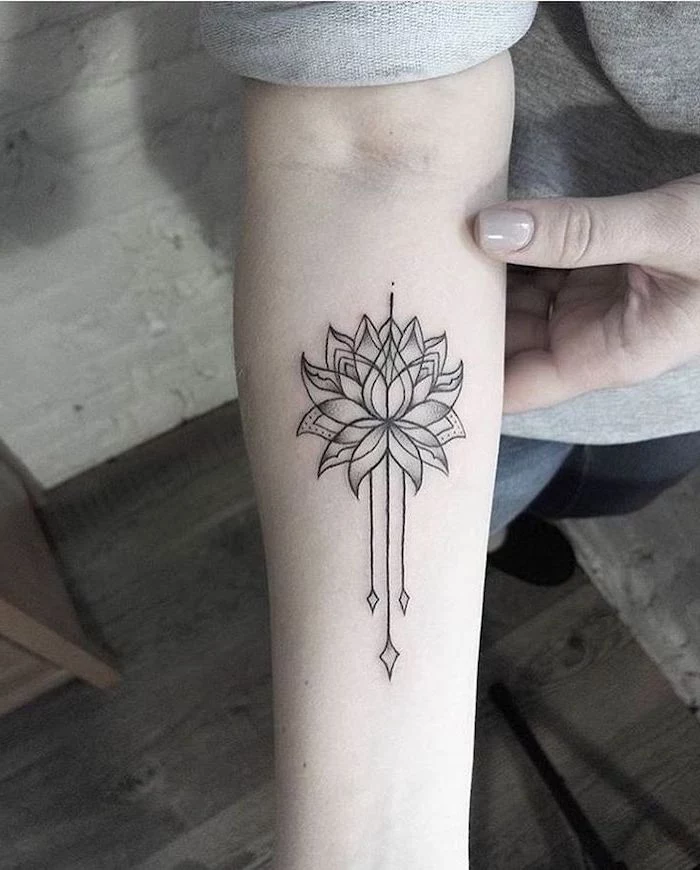
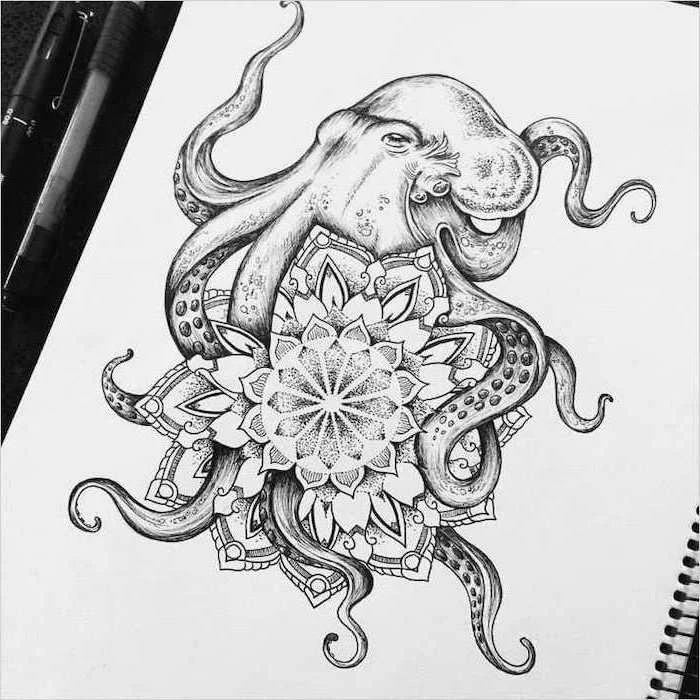
Dotwork: Uses thousands of tiny dots to create shading and texture, resulting in a softer, more ethereal look. It tends to age gracefully, as the dots can soften without losing the overall design integrity.
Linework: Relies on crisp, solid lines of varying thickness to define the pattern. This style offers a bold, graphic impact. It requires a very steady hand, as any inconsistency in the lines is immediately visible.
The choice often comes down to personal aesthetic: gentle and spiritual with dotwork, or sharp and defined with linework.
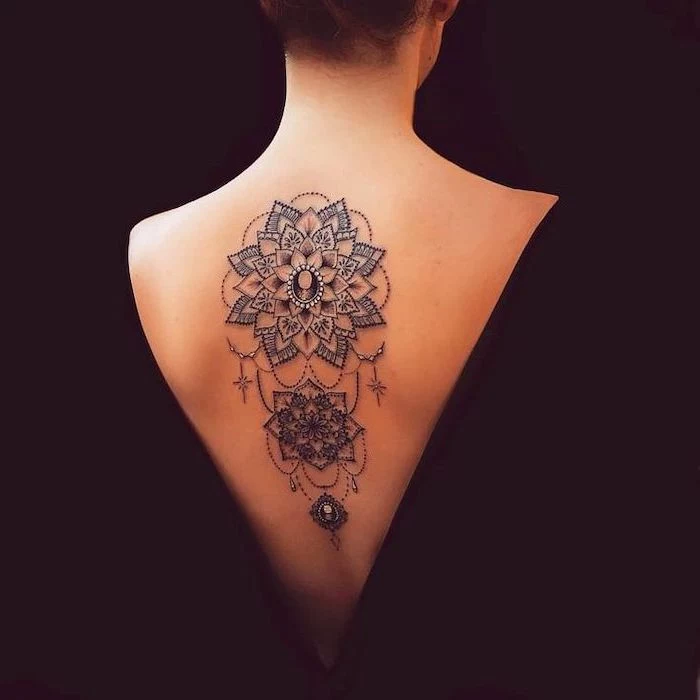
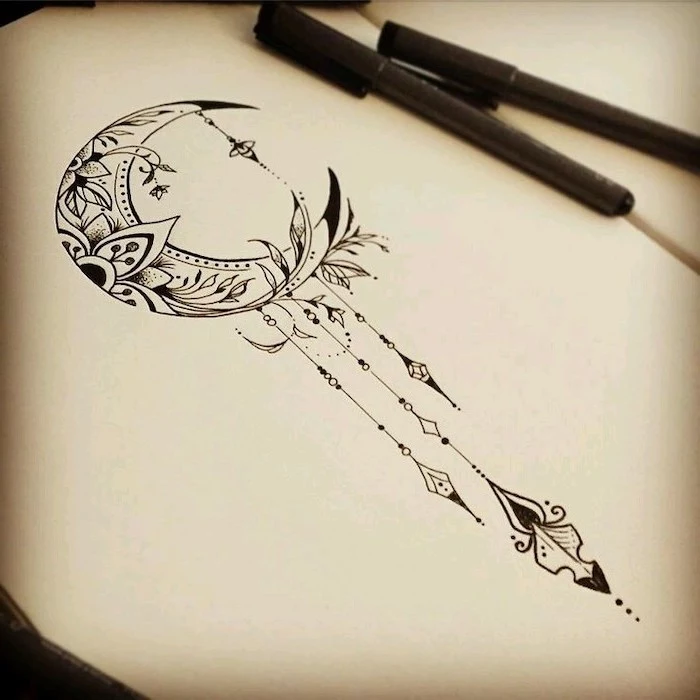
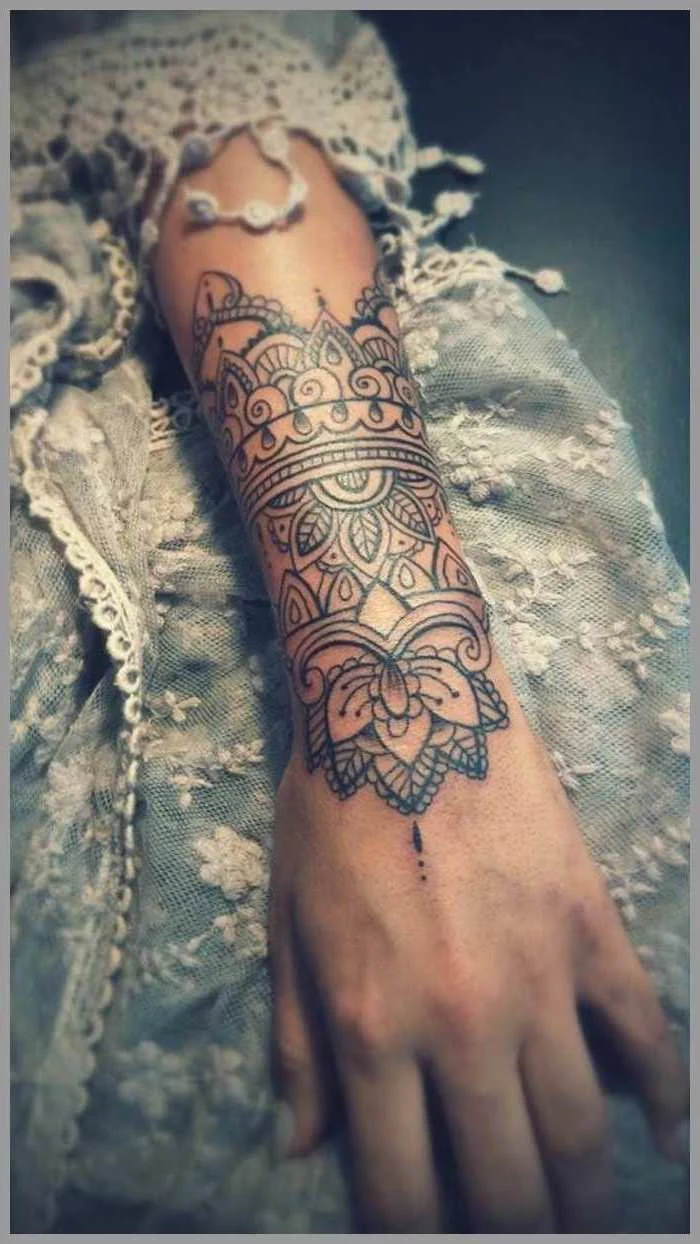
- Keep it clean, but don’t over-wash. A gentle, fragrance-free soap once or twice a day is enough.
- Pat dry with a clean paper towel; don’t rub with a fabric towel that can harbor bacteria.
- Apply a very thin layer of a recommended aftercare product. Too much can suffocate the tattoo.
- Avoid sun exposure at all costs during the healing phase.
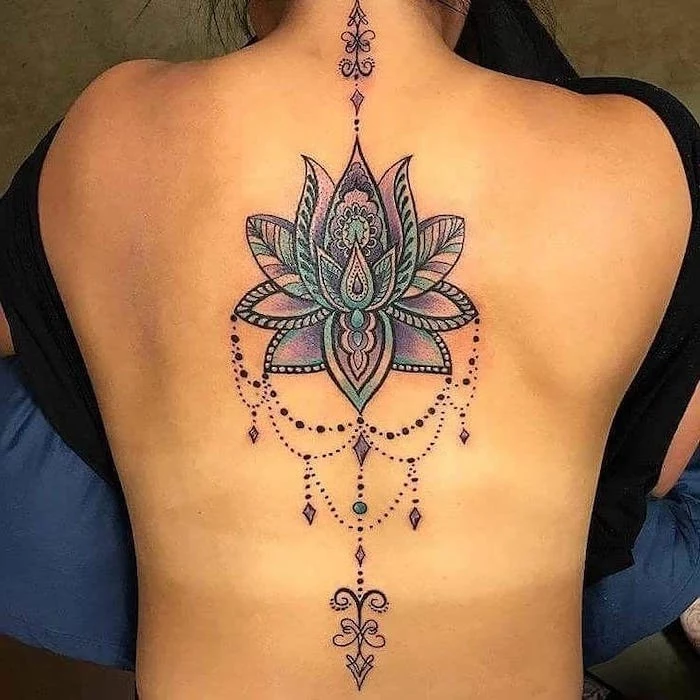
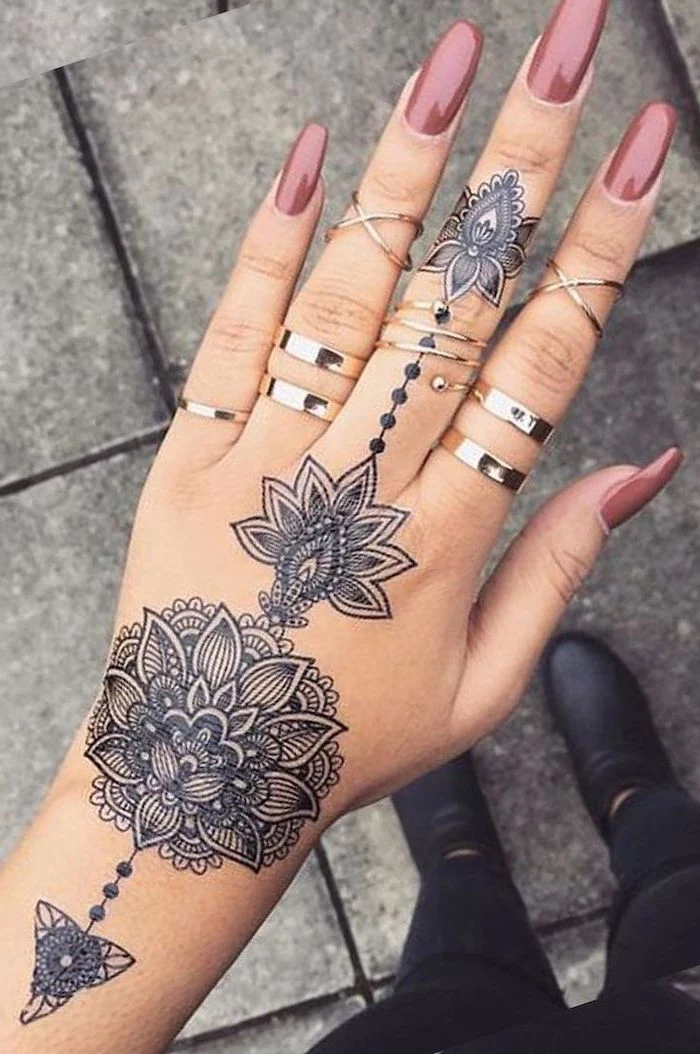
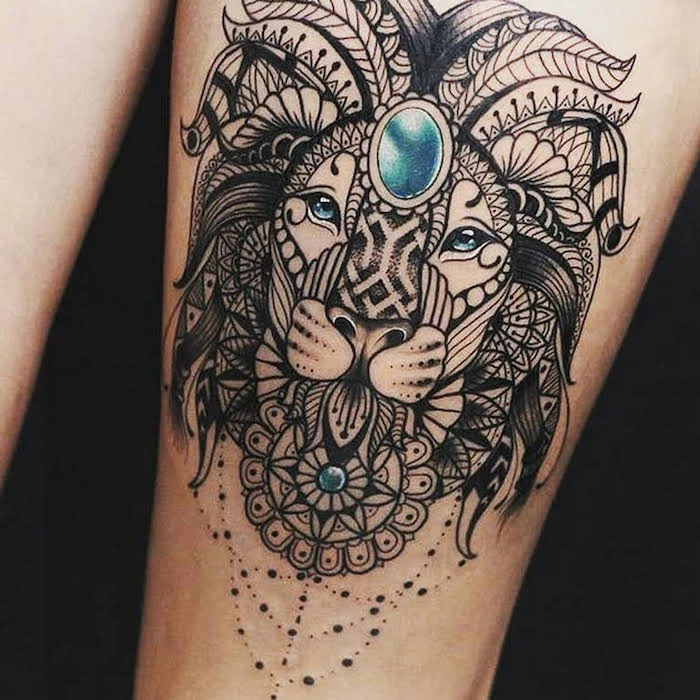
The word “mandala” is from the classical Indian language of Sanskrit. Loosely translated to mean “circle,” a mandala is far more than a simple shape. It represents wholeness.
This ancient heritage is why so many feel a spiritual pull towards the design. It’s not just an ornament; it’s a microcosm of the universe you choose to carry on your skin, a personal emblem of balance and completeness in a chaotic world.
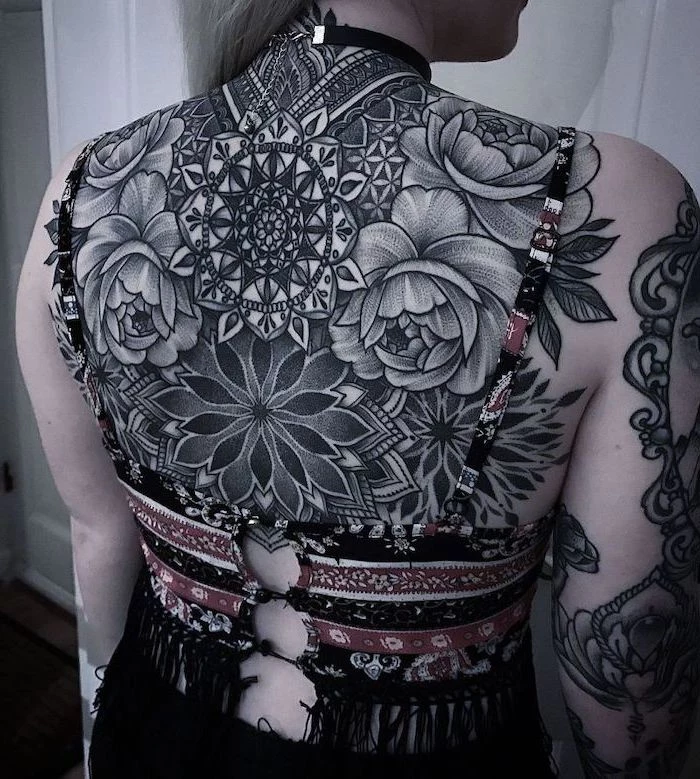
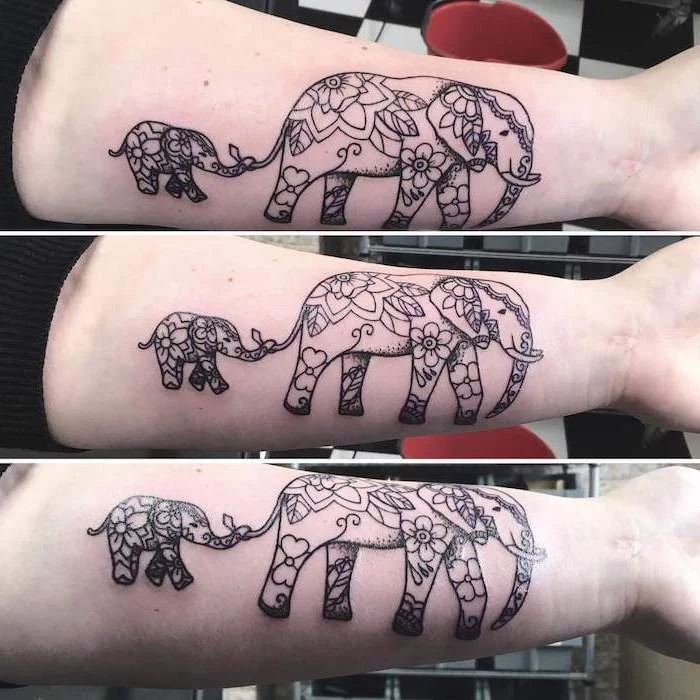
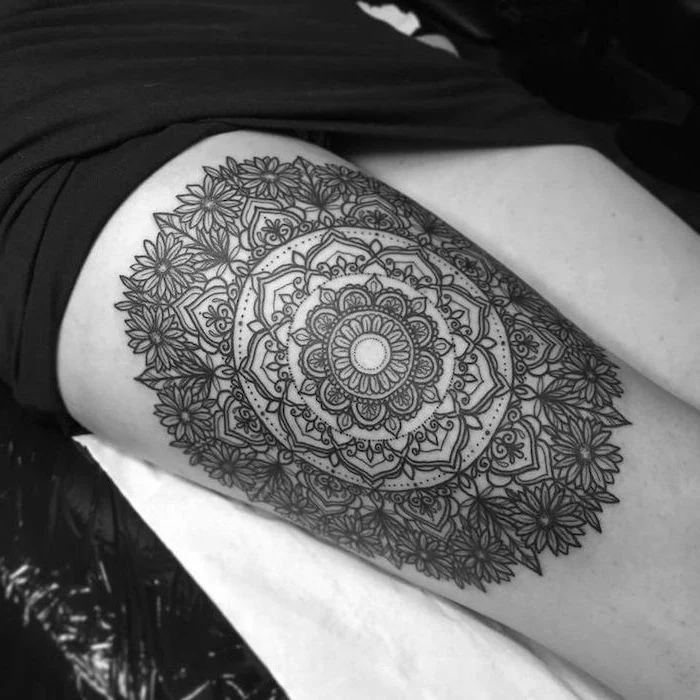
Beyond the classic black and grey, color can infuse your mandala with another layer of meaning. In Buddhist tradition, specific colors relate to different states of mind or elements: blue for infinity and purity, white for learning, red for life force, and yellow for humility. Working with your artist to create a specific palette can turn your tattoo from a beautiful design into a deeply personal statement piece.
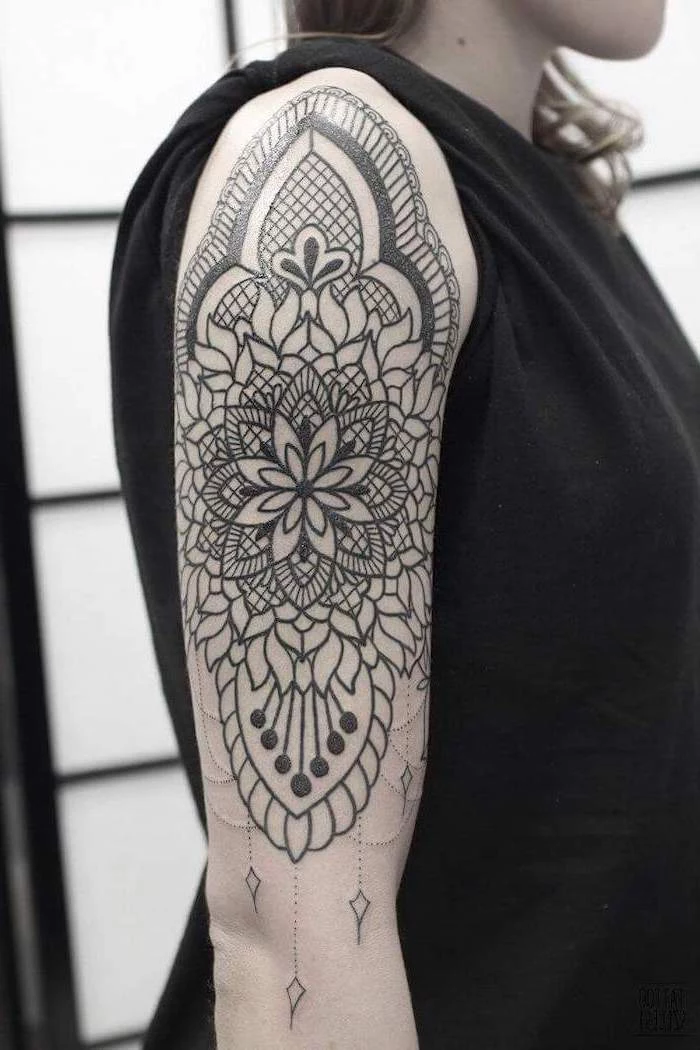
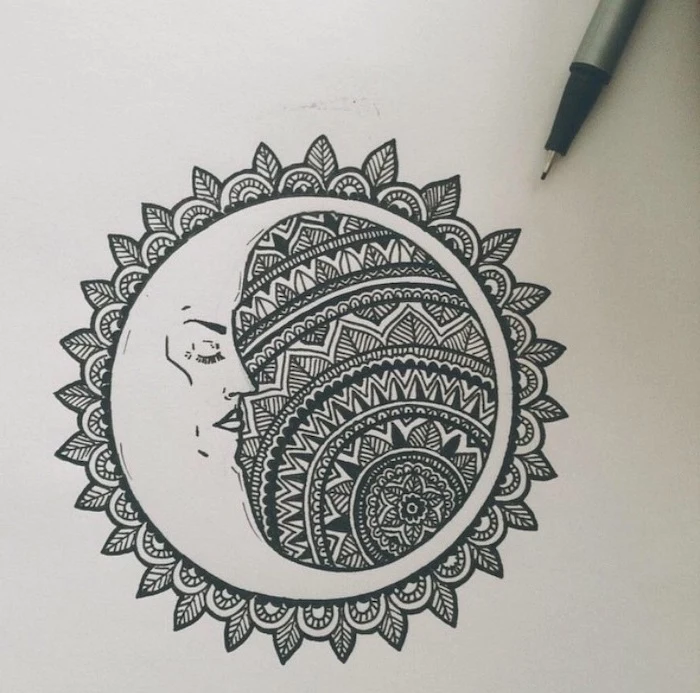
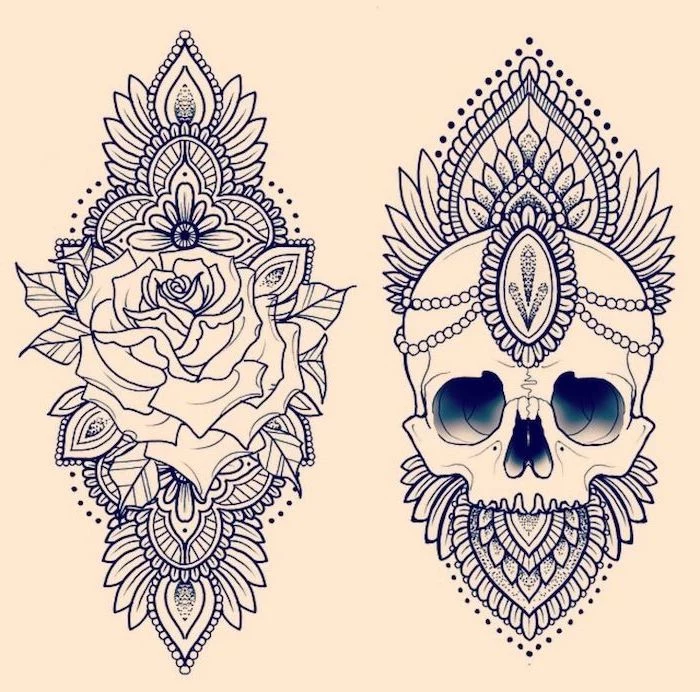
Crucial tip: A mandala is a test of an artist’s precision. When choosing your artist, look specifically for a portfolio filled with sharp geometric work, symmetrical patterns, and clean, consistent lines. An amazing portrait artist isn’t necessarily a great mandala artist. Scrutinize their healed work photos to see how their lines hold up over time.
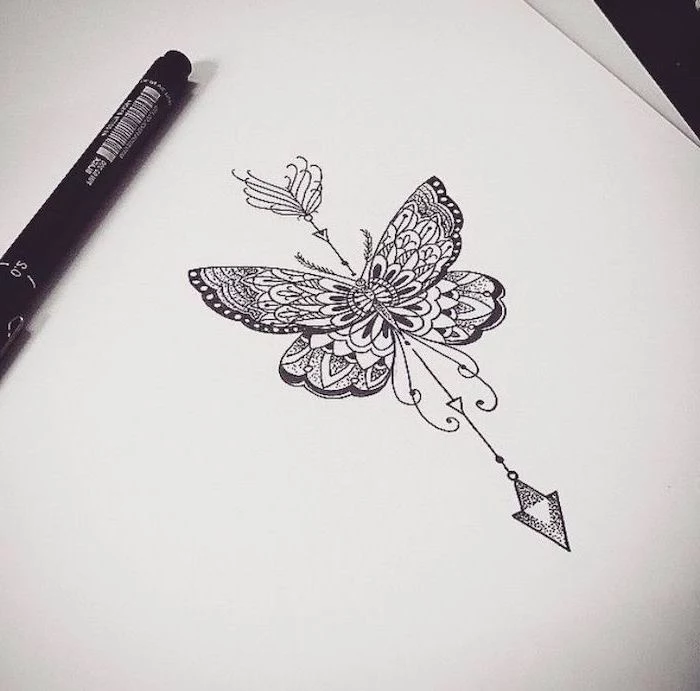
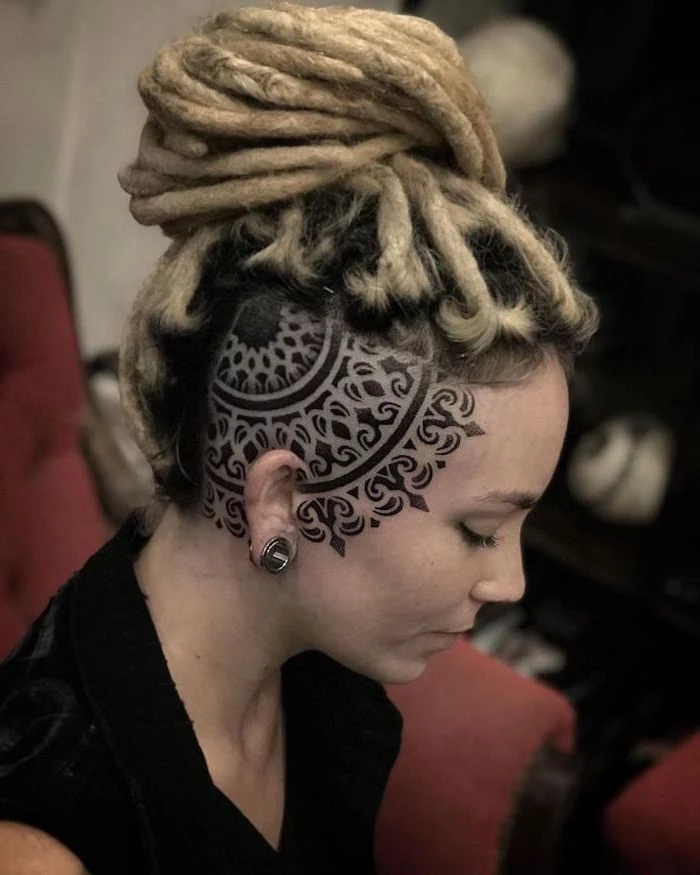
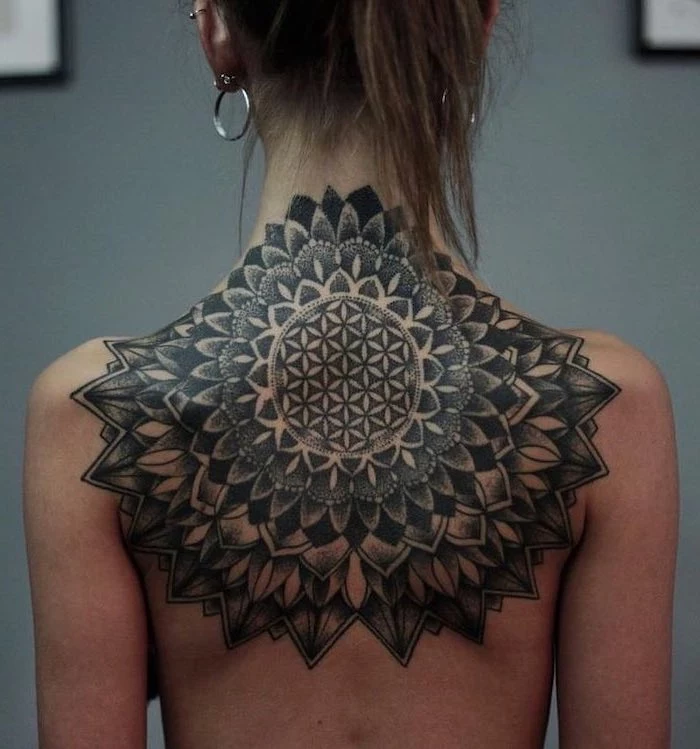
- It moves with you, creating a dynamic visual effect.
- It can be easily concealed or revealed.
- The flat surface of the sternum is ideal for maintaining perfect symmetry.
The secret? A tattoo that enhances your body’s natural lines. The sternum or underbust area is a popular and powerful placement for a mandala, as it sits at the body’s center, reinforcing the design’s symbolic meaning of balance and core strength.
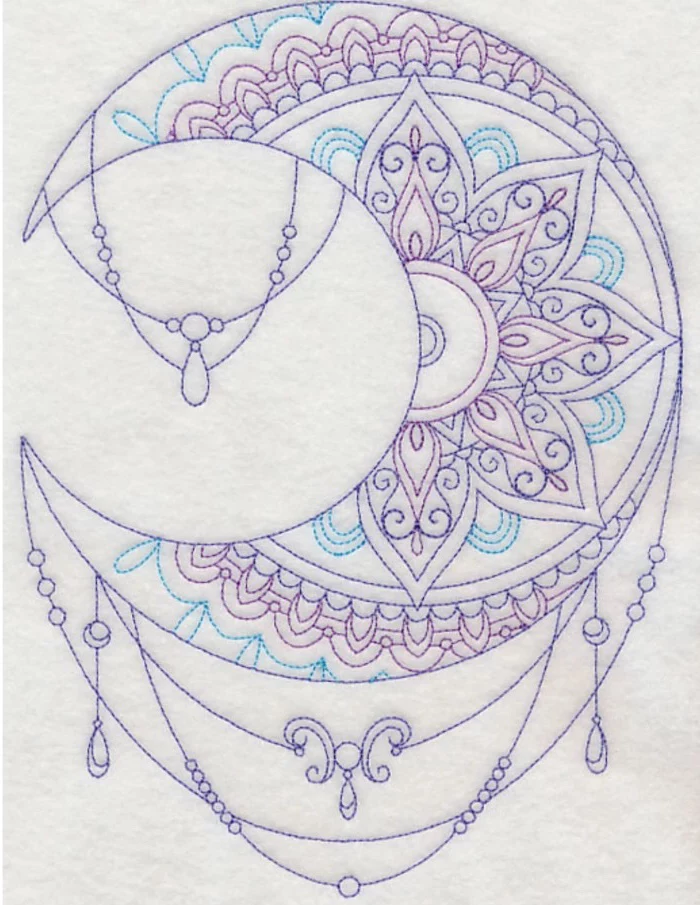
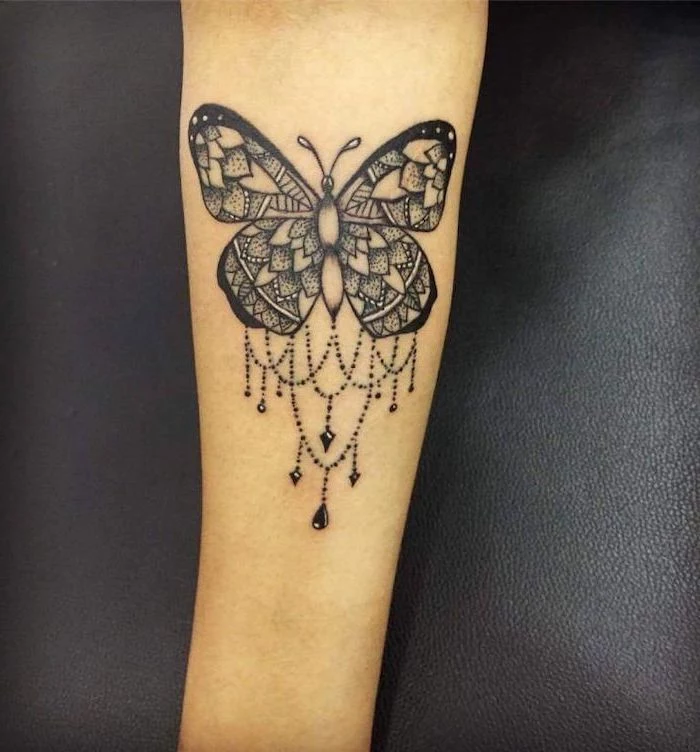
The sensation of the needle can be an intensely meditative experience for some. The repetitive nature of creating the intricate patterns, combined with the focused breathing required to stay still, can create a trance-like state. Many clients describe the process not as painful, but as a ritual marking a personal transformation or a moment of mindfulness.
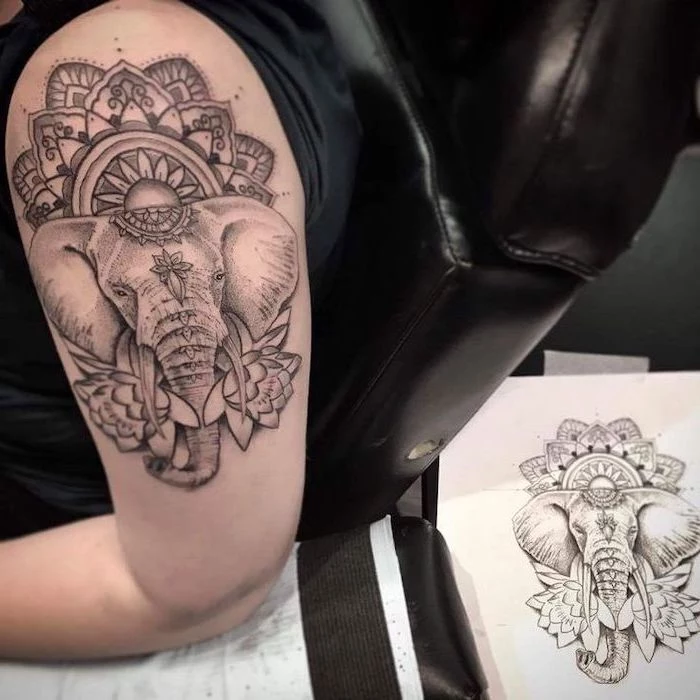
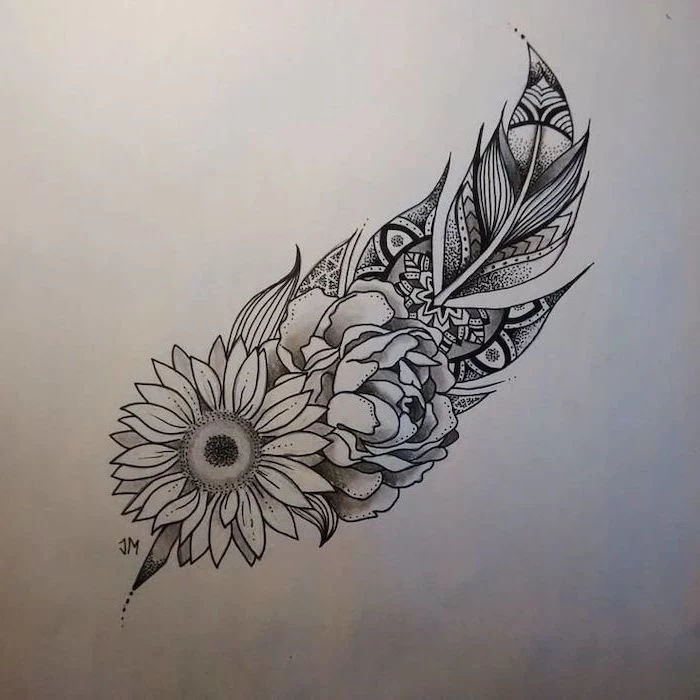
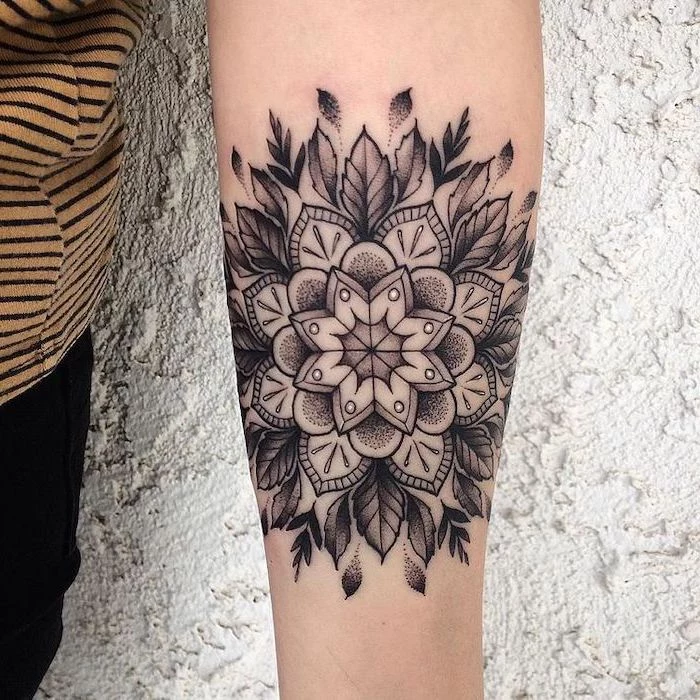
Can my mandala include other symbols?
Absolutely. This is a powerful way to personalize your piece. Integrating a lotus flower can symbolize purity and rebirth. An animal, like the lion seen in some galleries, can represent strength and courage at the core of your personal universe. The key is to discuss the integration with your artist to ensure the elements blend cohesively and the mandala’s structure remains balanced.
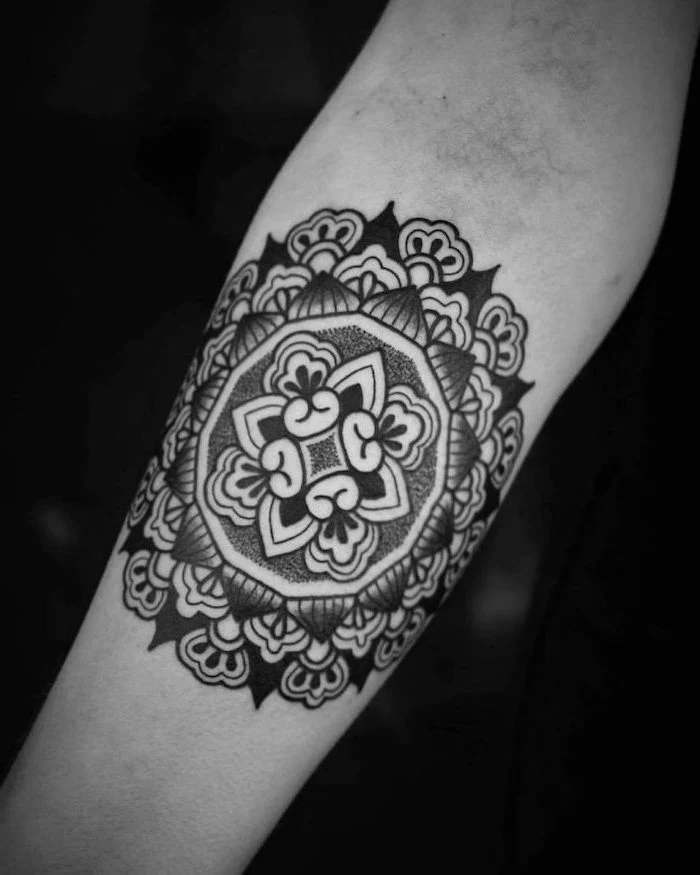
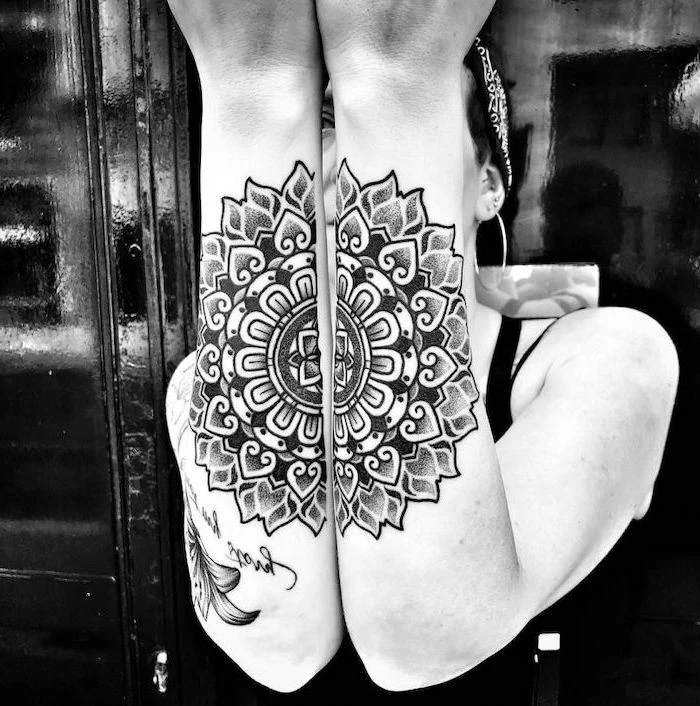
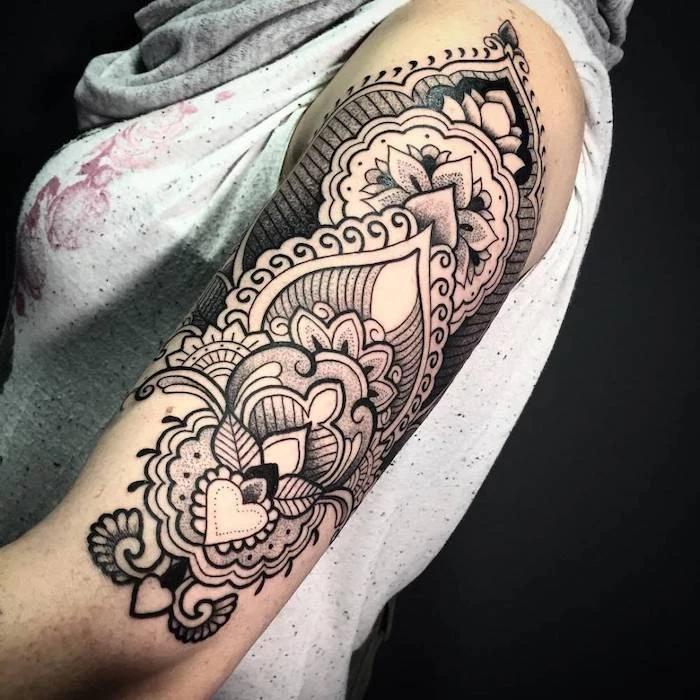
Did you know that many modern vegan tattoo inks, like those from brands such as Eternal Ink or Fusion Ink, use witch hazel as a carrier instead of glycerin derived from animal fat?
This makes getting a tattoo more aligned with a cruelty-free lifestyle. If this is important to you, simply ask your artist what type of ink they use. Most reputable studios are happy to accommodate and provide information on their materials.
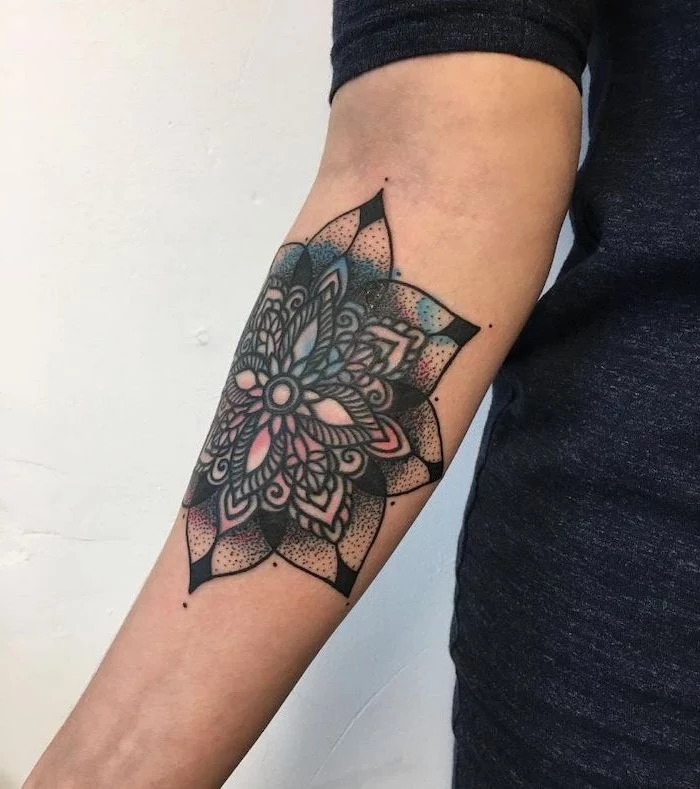
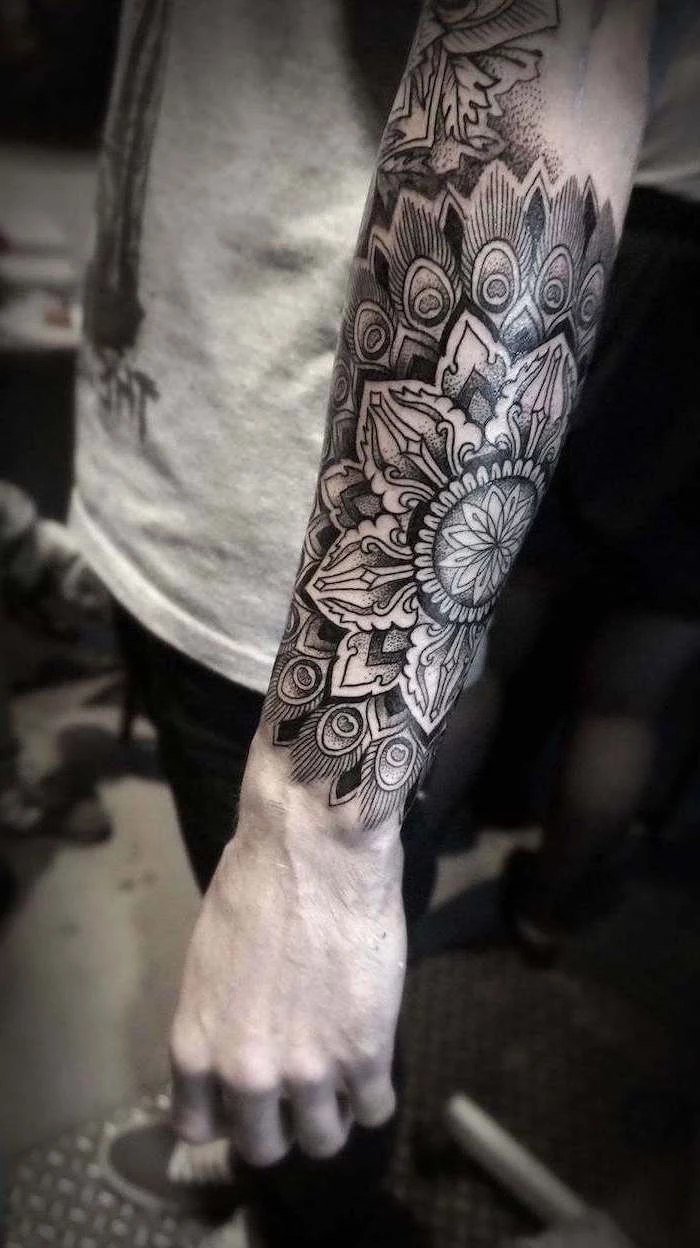
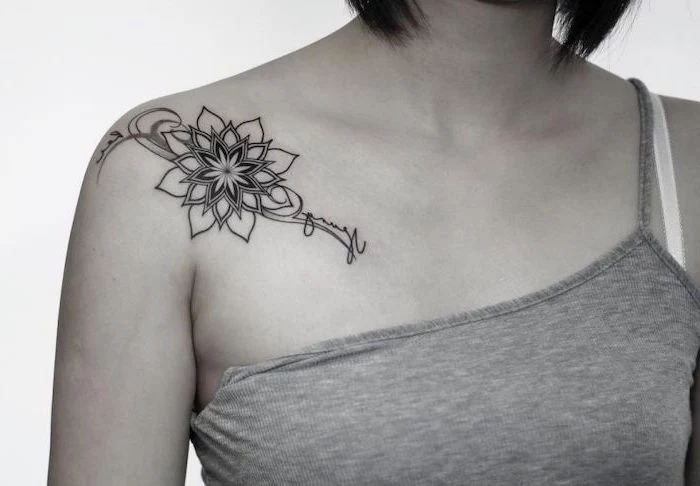
A common pitfall is going too small. The beautiful, intricate details of a mandala need space. Over time, ink spreads slightly under the skin—a process known as ‘blowing out’. A tiny, highly detailed mandala might look perfect on day one, but in ten years it could blur into an unrecognizable shape. Listen to your artist’s advice on minimum sizing for the level of detail you want.
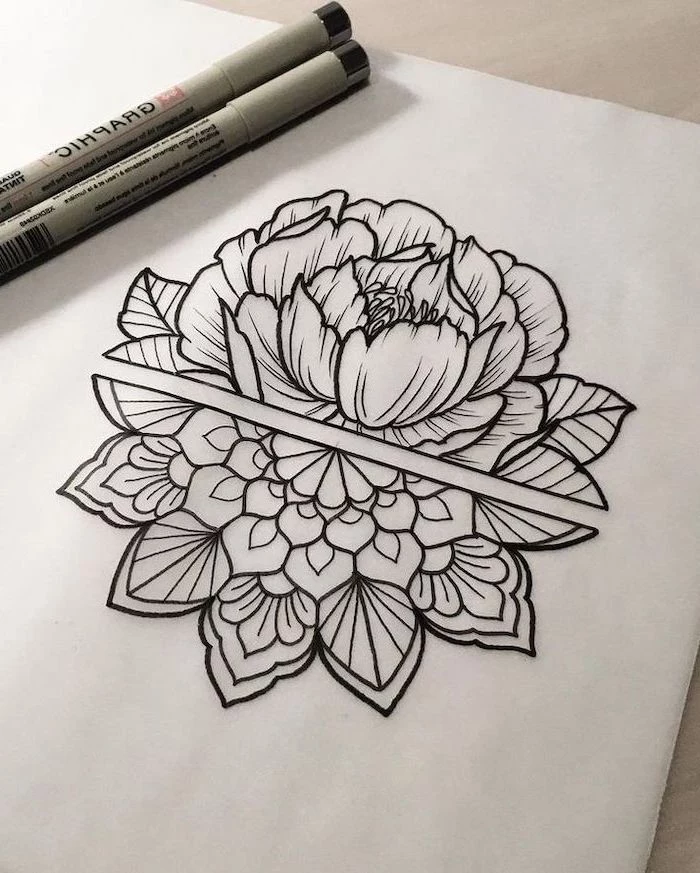
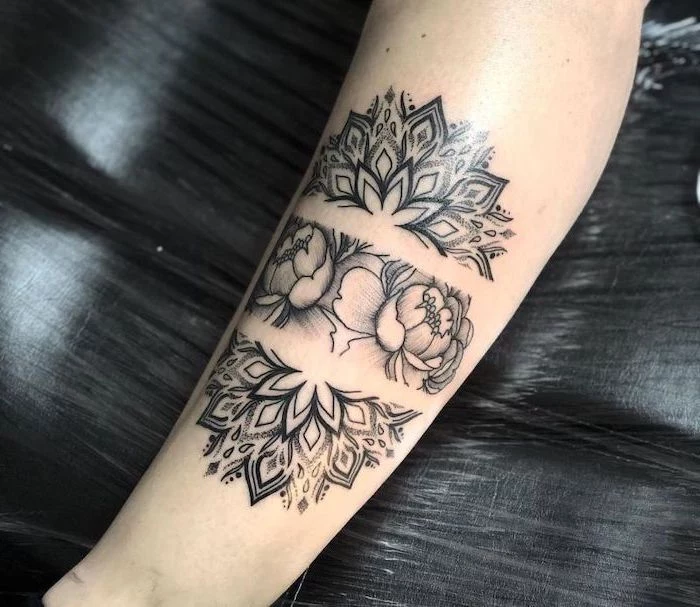
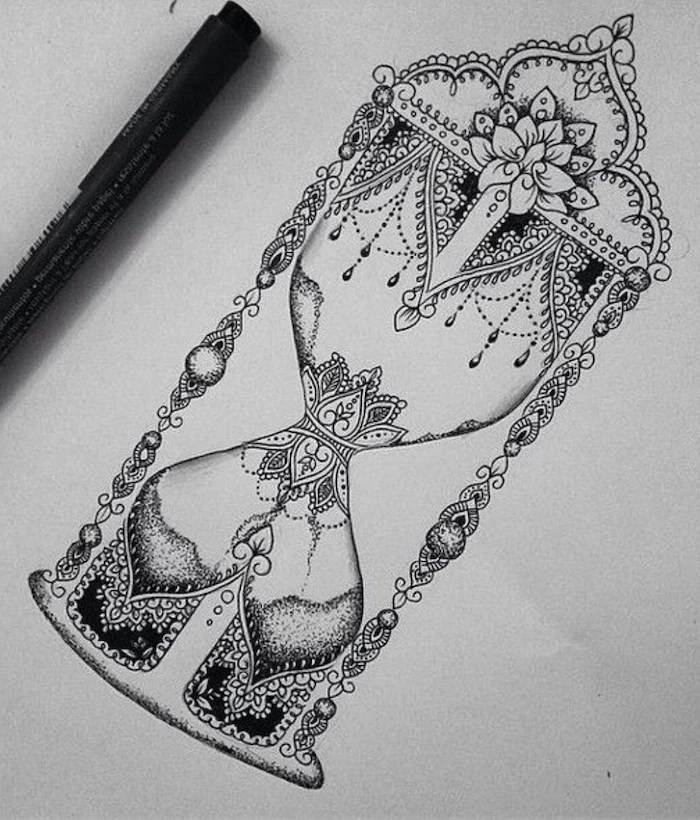
Your skin is not a static canvas. A design that looks perfectly symmetrical on a screen can become distorted when placed on a curved or muscular area like a shoulder blade or calf. A skilled artist will use a stencil and draw directly on your skin to adapt the design to your body’s unique contours, ensuring the mandala looks balanced from every angle as you move.
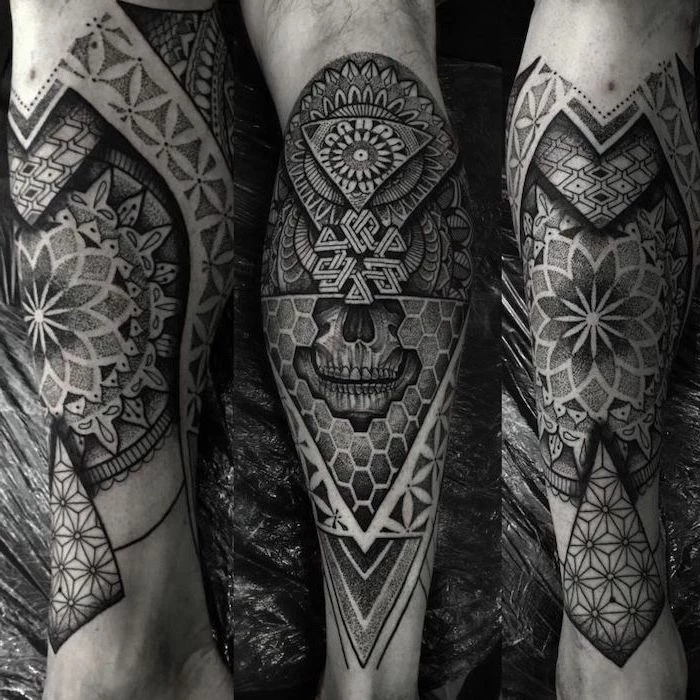
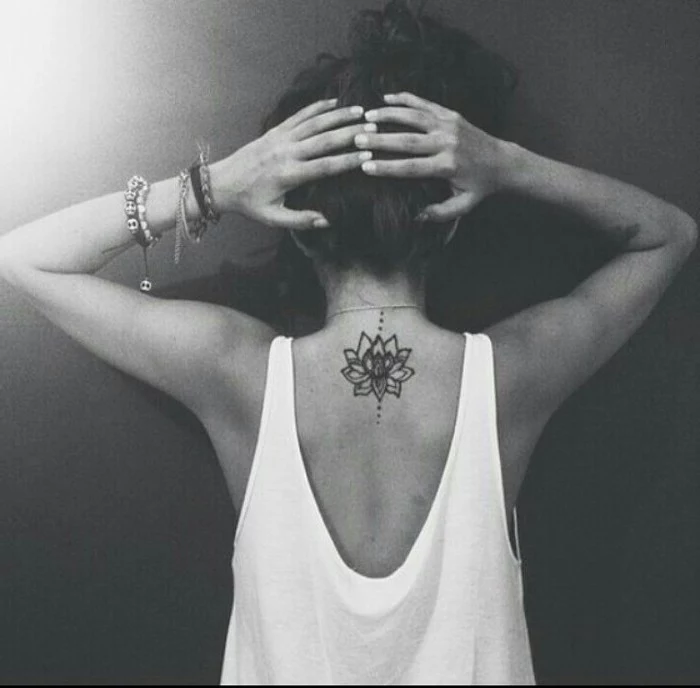
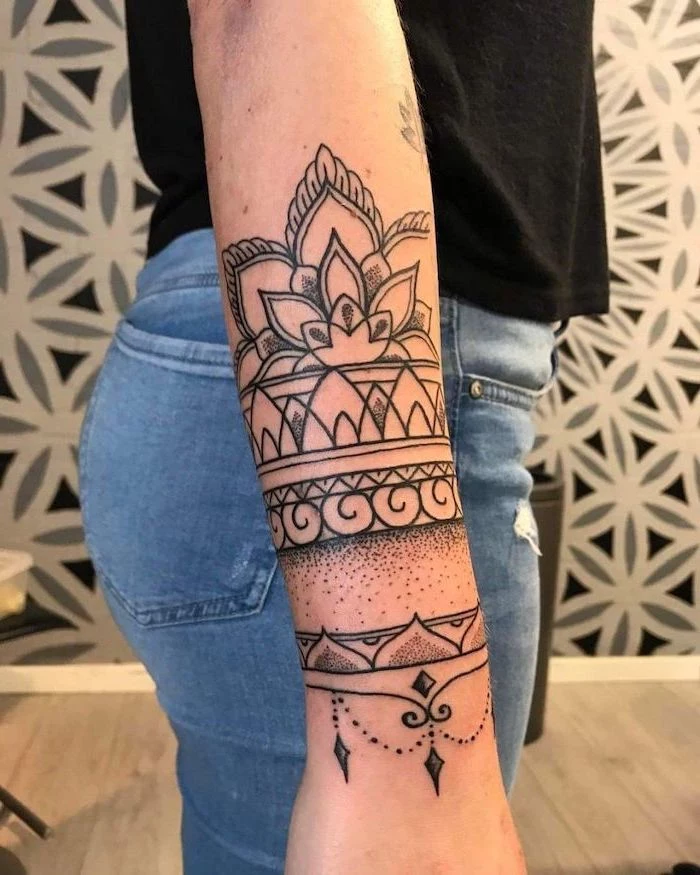
- Hydrate well in the 24 hours leading up to your appointment.
- Eat a solid meal about an hour beforehand to keep your blood sugar stable.
- Wear comfortable, loose clothing that allows easy access to the tattoo area.
- Avoid alcohol or blood thinners for at least a day prior.
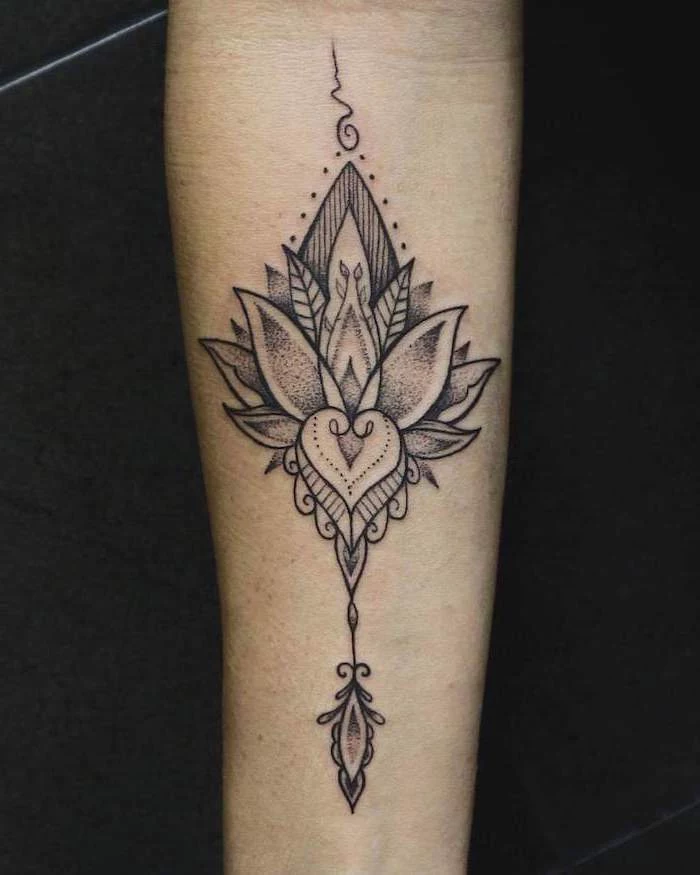
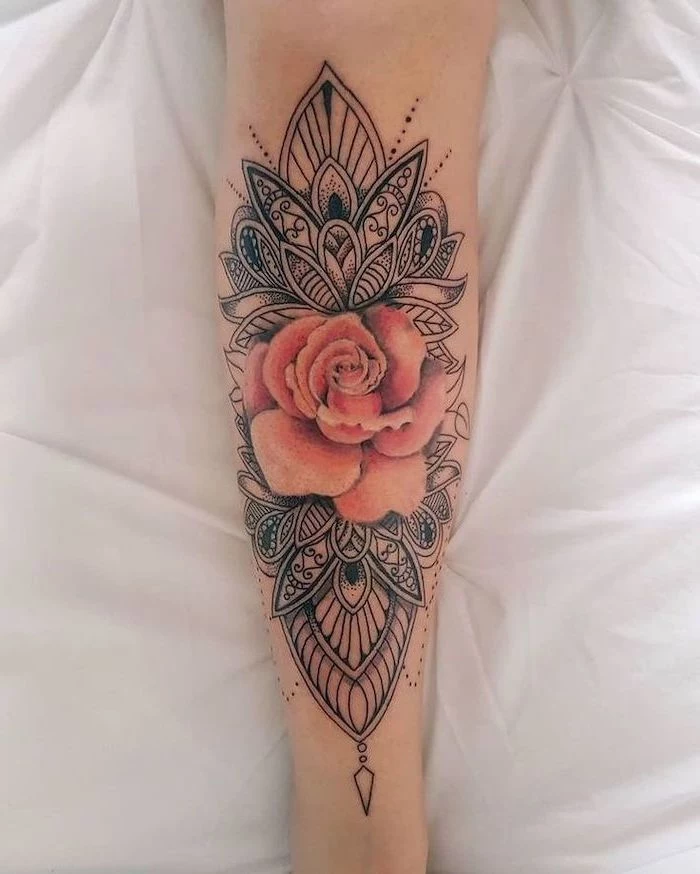
“Look deep into nature, and then you will understand everything better.” – Albert Einstein
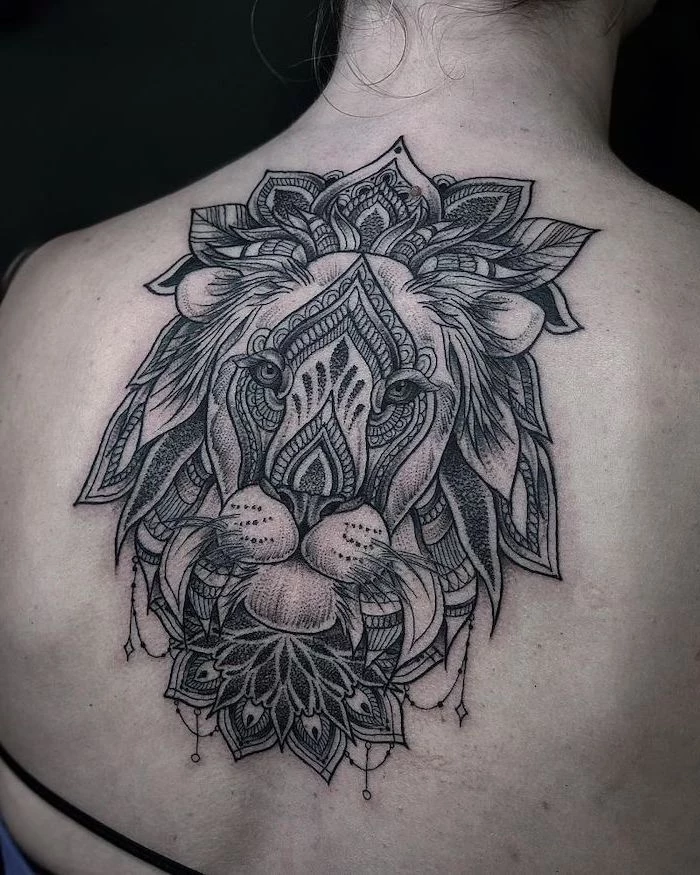
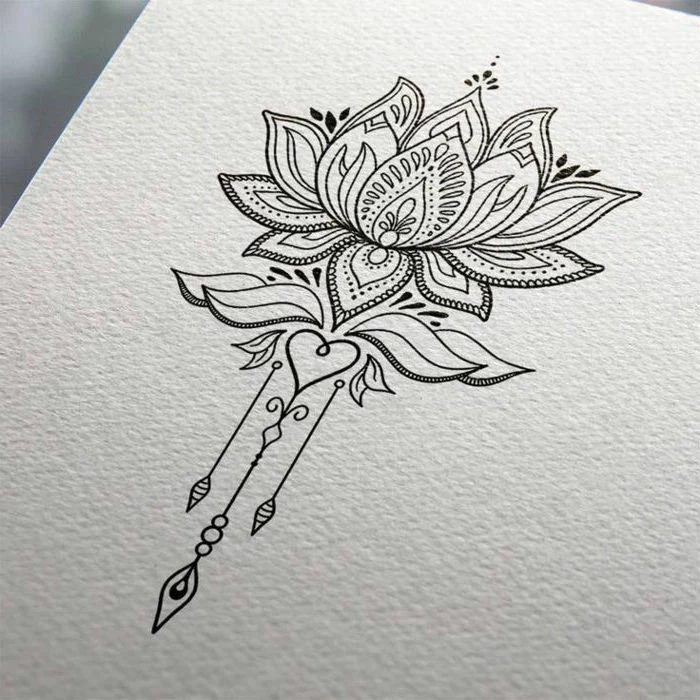
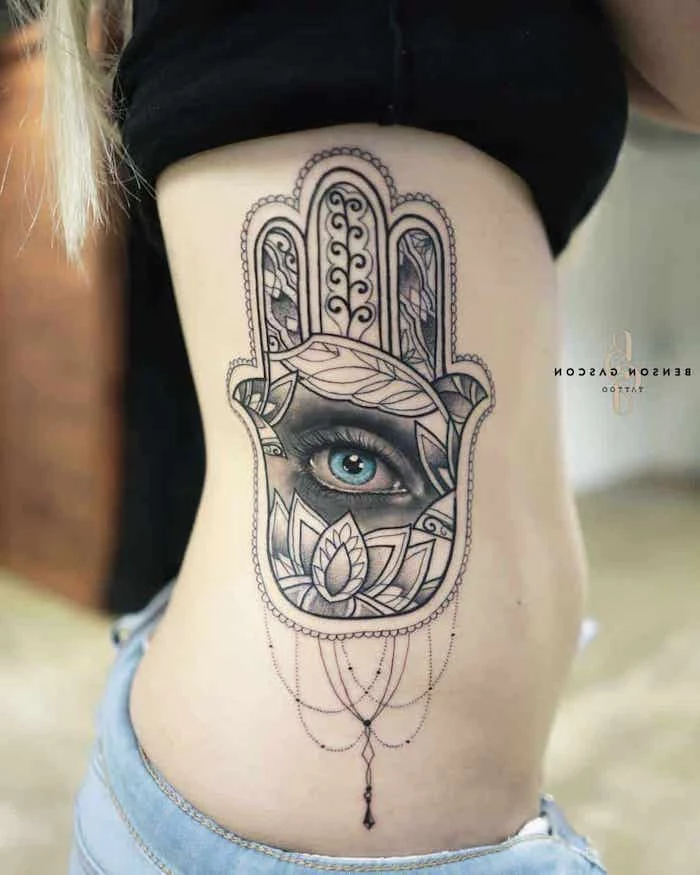
Think Long-Term: Your mandala’s worst enemy is the sun. UV rays break down ink particles, causing fading and line blurring. To keep your geometric masterpiece sharp for decades, make a high-SPF sunscreen a non-negotiable part of your daily routine on any exposed tattoos. A well-cared-for tattoo is a tattoo that lasts a lifetime.
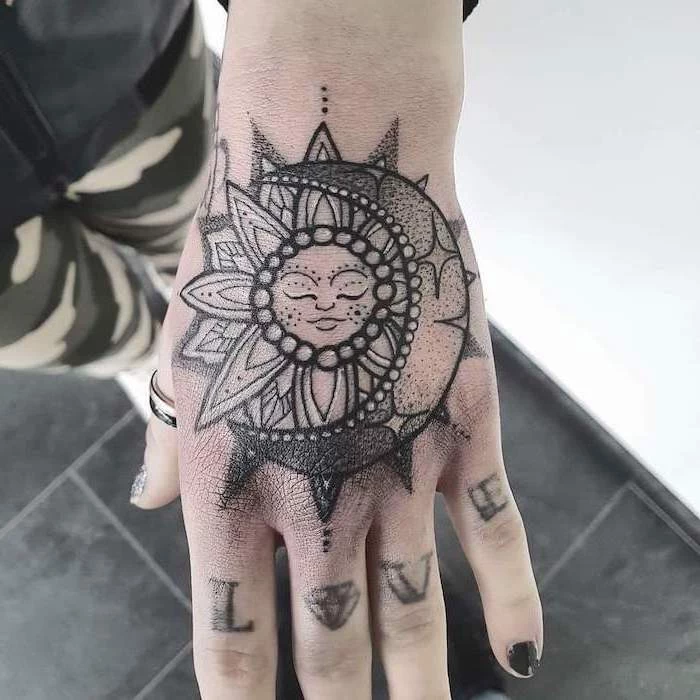
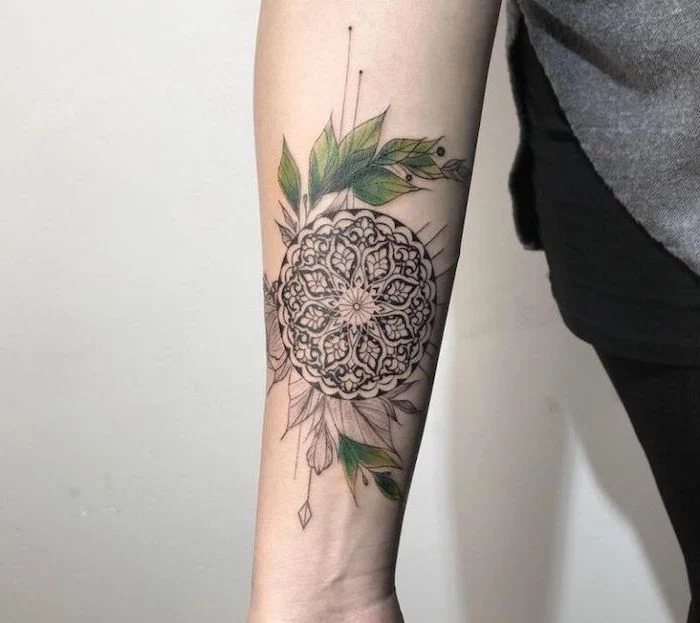
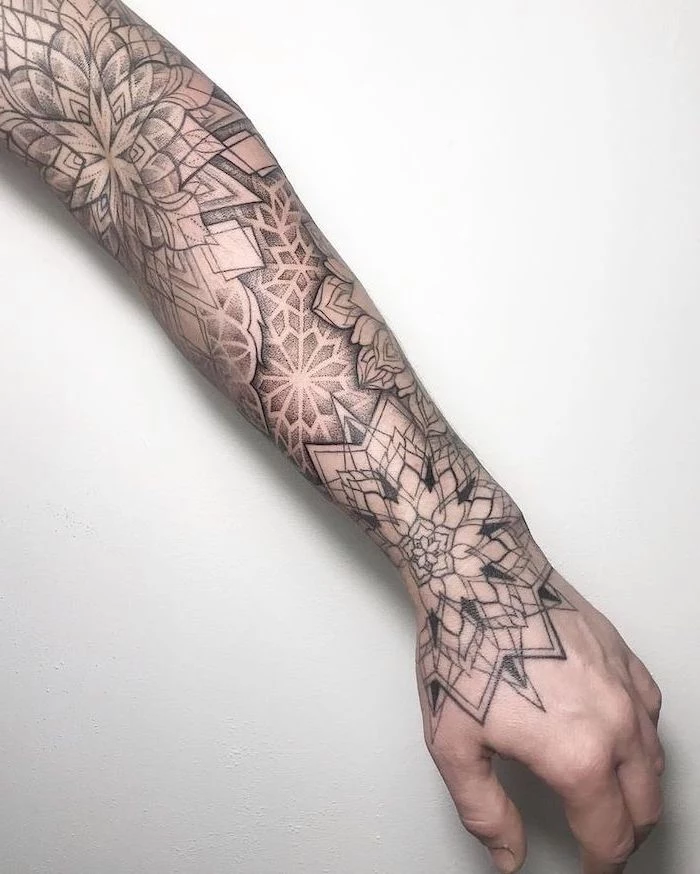
The delicate petals of a lotus flower emerging from a central mandala point is a hugely popular and meaningful combination. Here’s why:
- Purity: The lotus grows in muddy water but blooms clean and beautiful, symbolizing purity of mind and spirit.
- Enlightenment: In many Eastern religions, it represents the journey from darkness to enlightenment.
- Creation: It combines the universal symbolism of the mandala with the specific journey of personal growth.
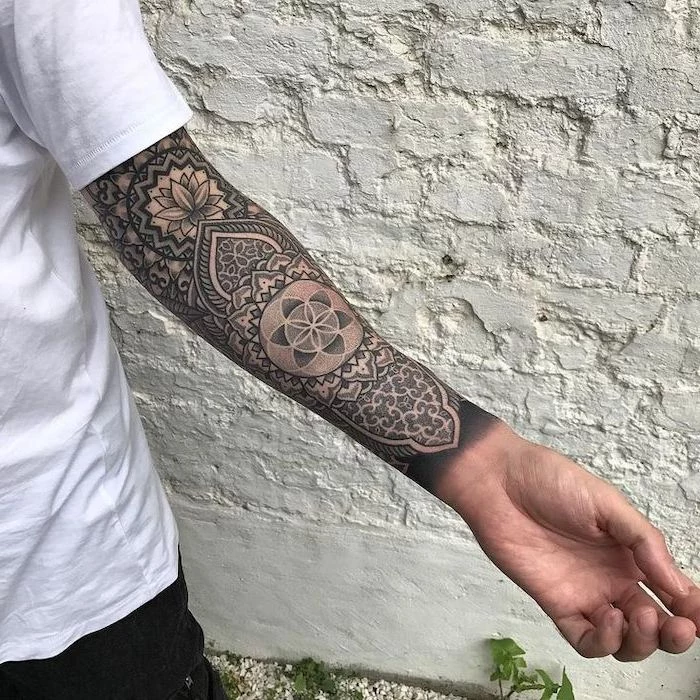
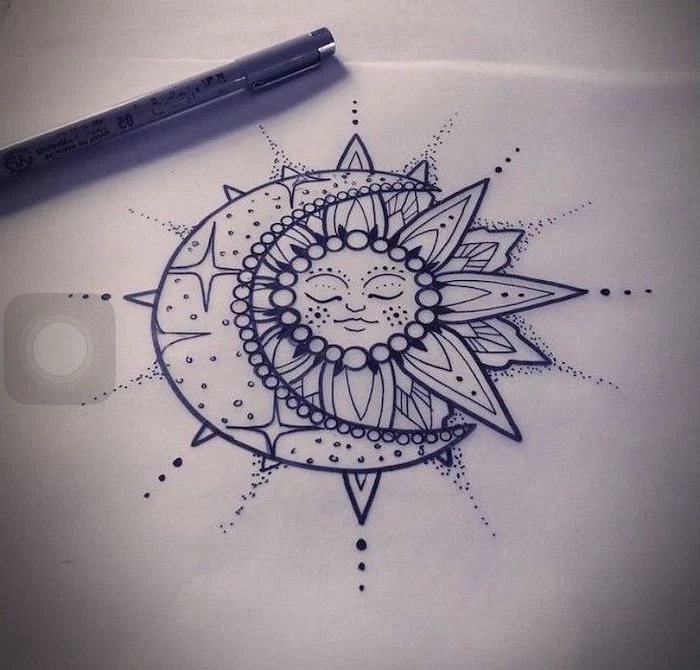
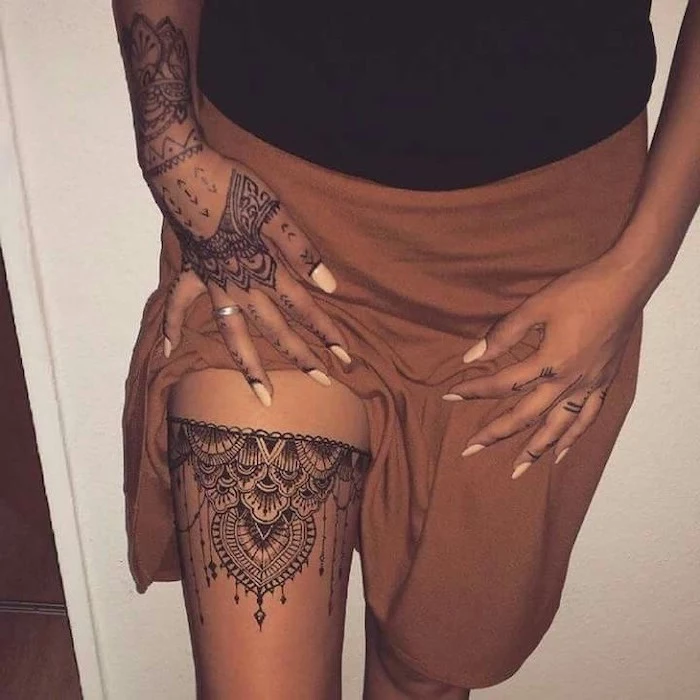
How much should I budget for a mandala tattoo?
It varies widely, but it’s not a place to bargain-hunt. Price is determined by size, placement, and above all, complexity. A simple 4-inch linework mandala on a forearm might take 2-3 hours, while a highly detailed dotwork piece covering a shoulder blade could be an all-day session or more. Always prioritize the quality of the artist over a lower price; a cheap tattoo is rarely a good tattoo.
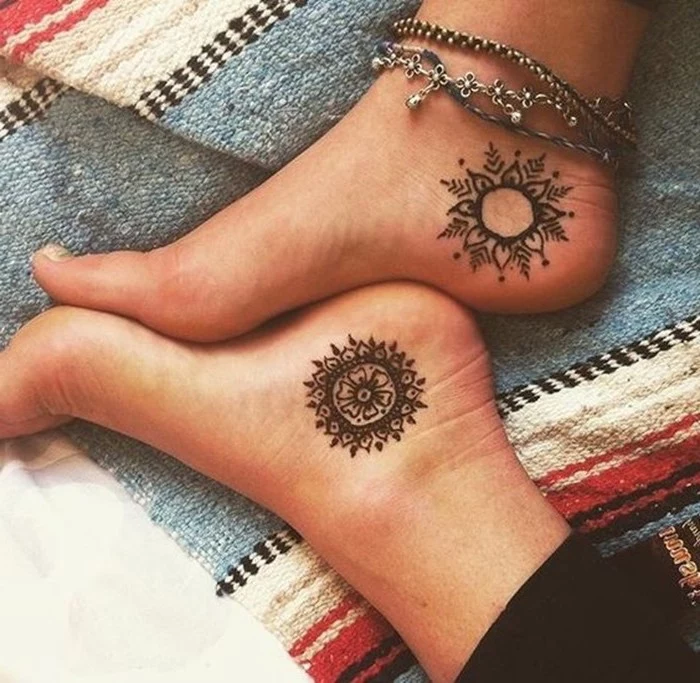
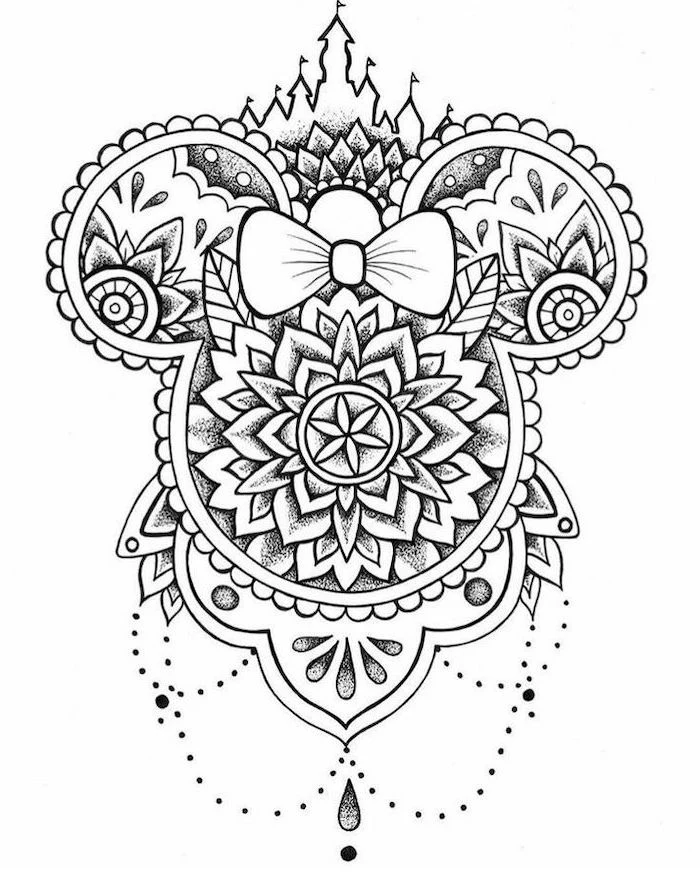
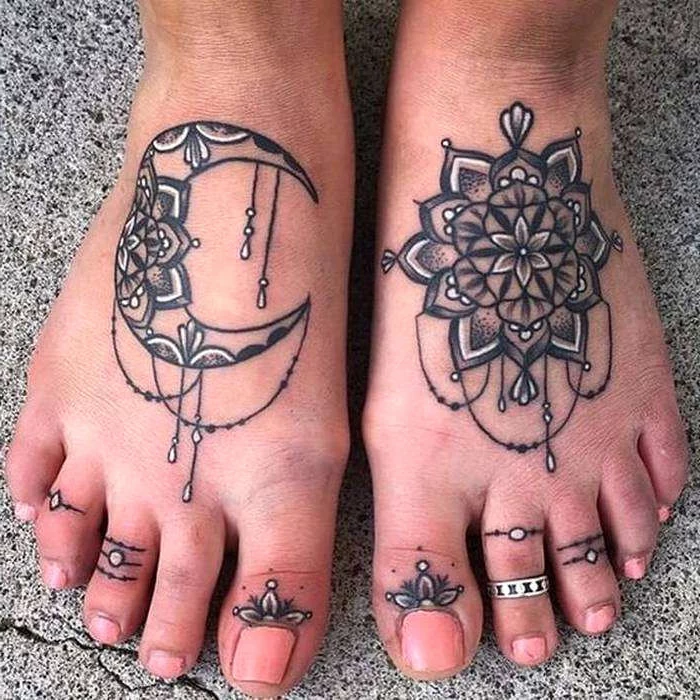
A growing trend is the use of a single pop of color within an otherwise black and grey mandala. A flash of turquoise, a deep crimson, or a vibrant gold can draw the eye to the center or highlight a specific pattern within the design. This technique offers a stunning, high-contrast look that feels both classic and contemporary.
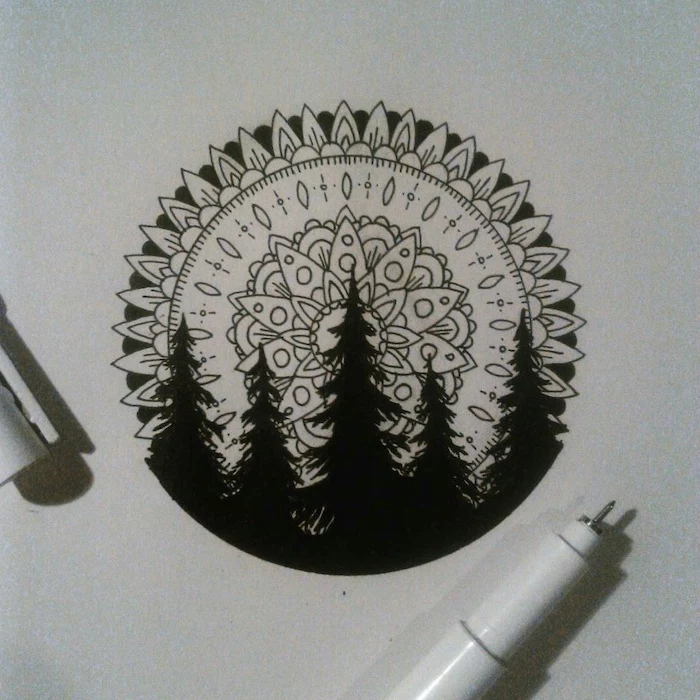
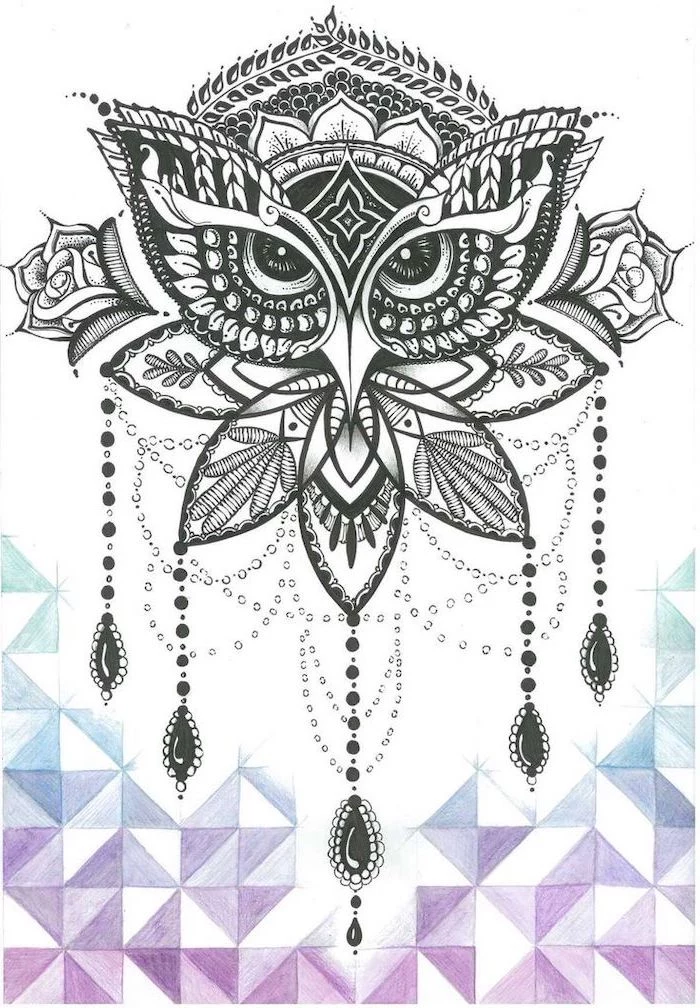
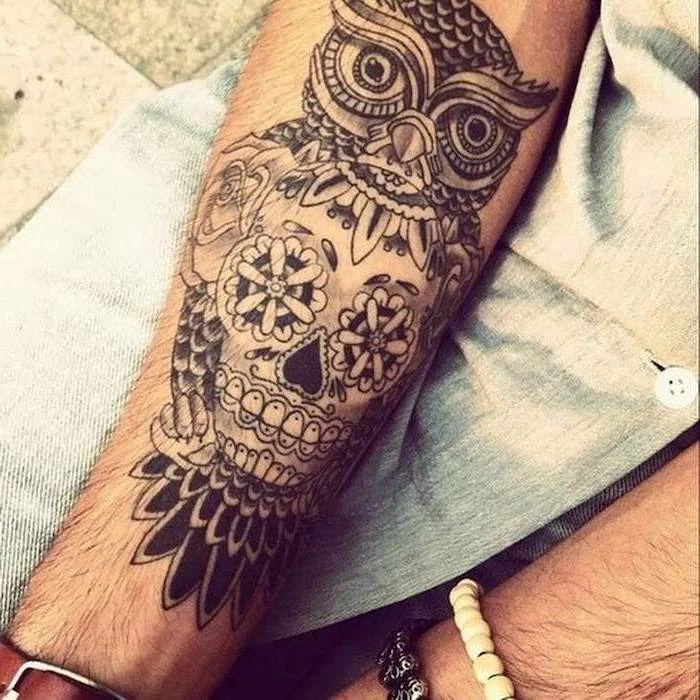
Tibetan Buddhist monks create breathtakingly intricate sand mandalas as a form of meditation, only to ritualistically destroy them upon completion to symbolize the impermanence of life.
Getting a permanent mandala tattoo can be seen as a beautiful contrast to this practice. It takes a symbol of the transient and makes it a lasting part of your own being—a permanent reminder of a momentary state of balance and beauty.
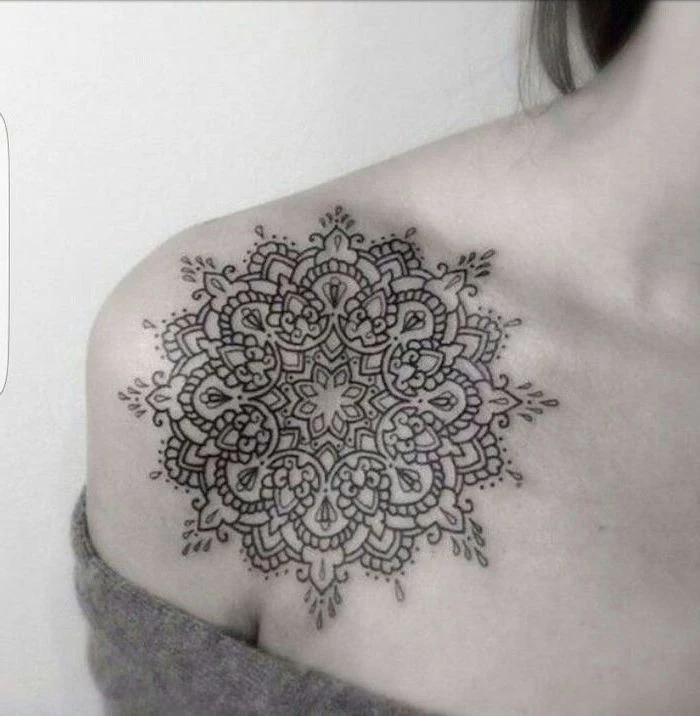
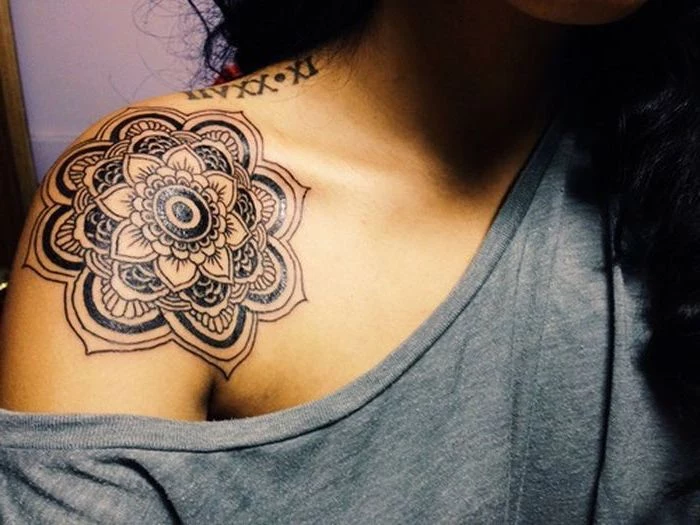
Forearm: Excellent visibility, allowing you to enjoy your art daily. The relatively flat surface is great for symmetrical designs. Pain level is generally low to moderate.
Back: Offers a large, stable canvas for grand, highly detailed pieces. It’s less exposed to the sun, which helps with longevity. Can be more painful, especially along the spine.
Your choice depends on whether you want a personal, easily visible piece or a large, impactful statement that’s revealed more selectively.
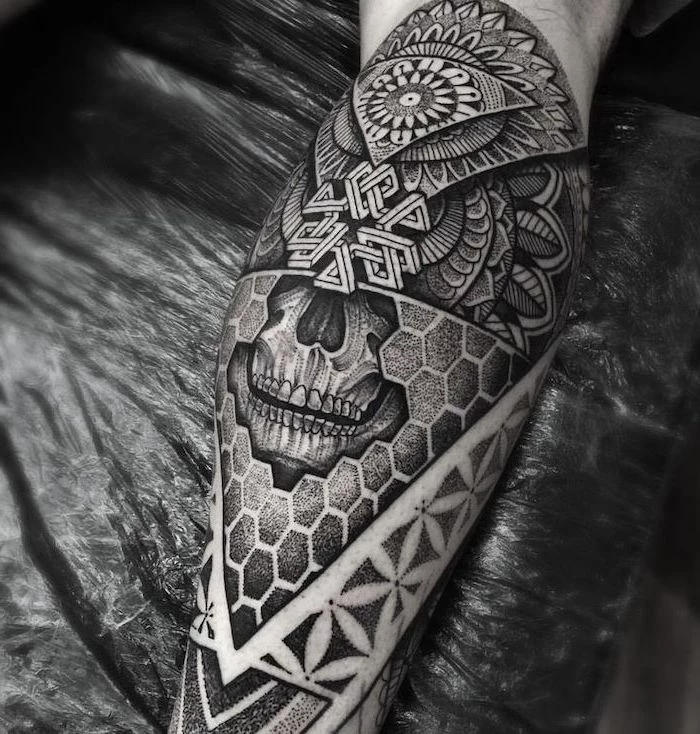
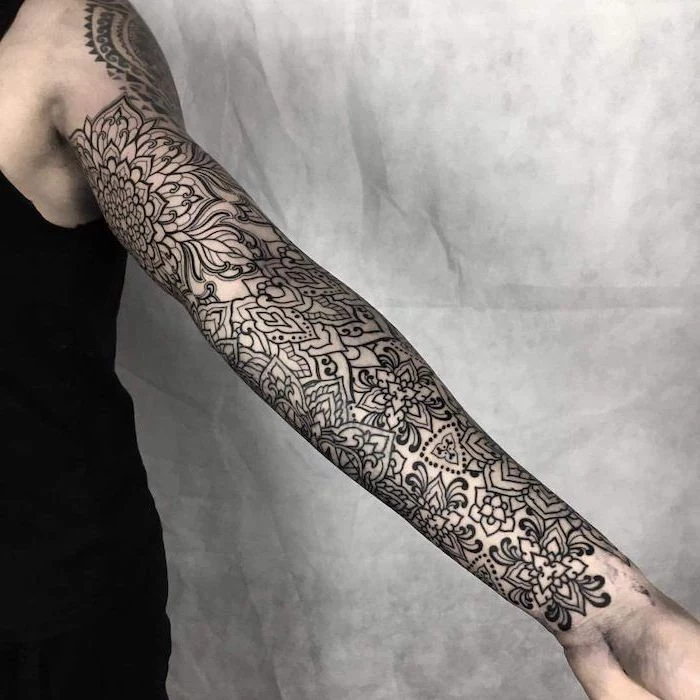
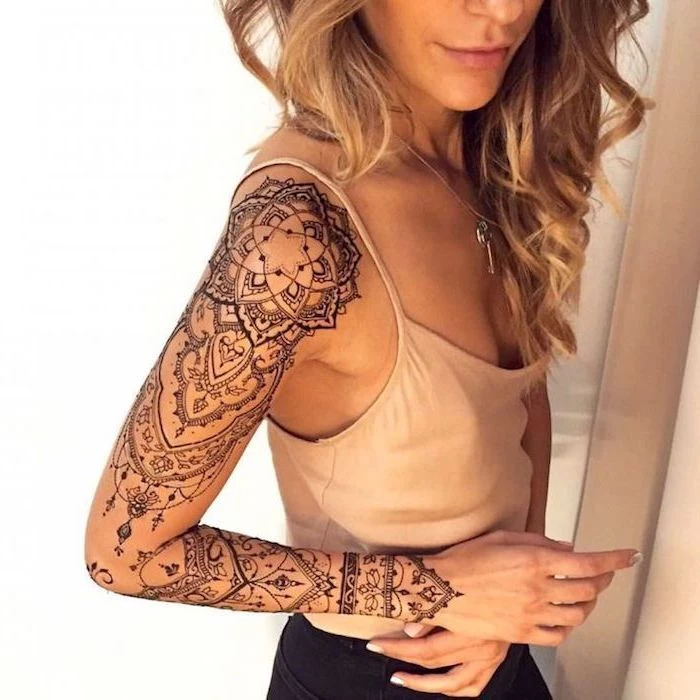
While traditional mandalas are circular, don’t feel locked into that shape. Artists are now creating ‘half-mandalas’ that fit perfectly under the collarbone or along the side of the wrist. We’re also seeing diamond, hexagonal, or other geometric shapes form the base of the pattern, offering a modern twist on the ancient symbol.
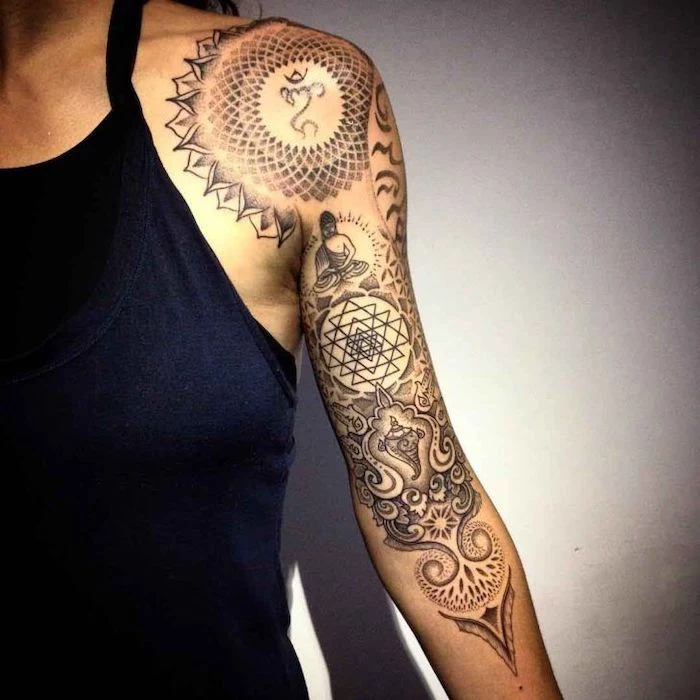
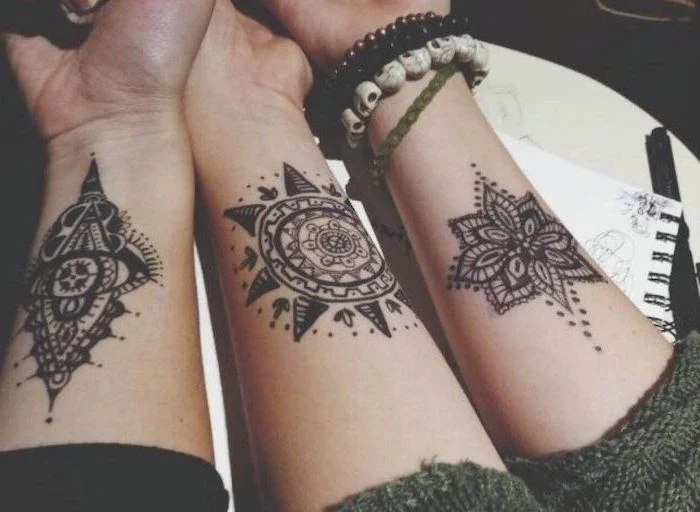
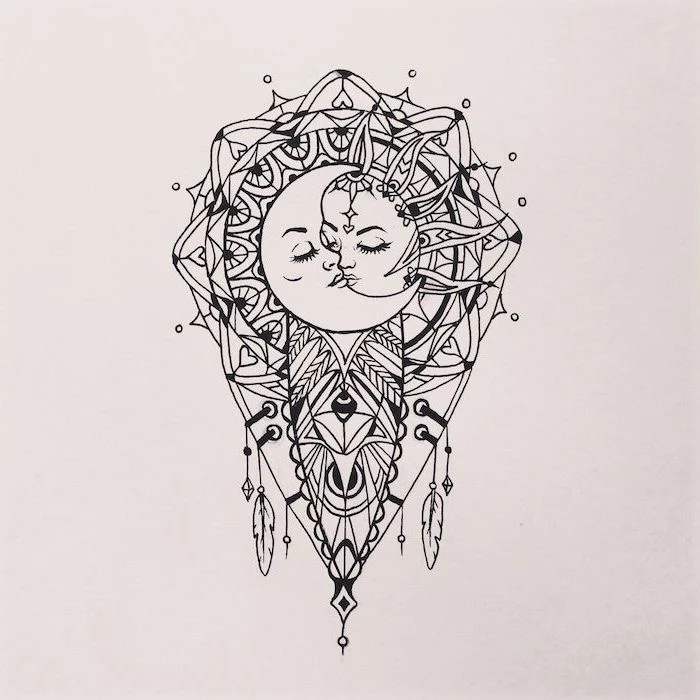
- You feel heard and understood by the artist.
- The final design is a true collaboration between your vision and their expertise.
- The stencil is placed and re-placed until it sits perfectly with your body’s flow.
The result? Confidence. A great consultation is the foundation of a great tattoo. It removes all doubt and lets you relax into the process, knowing the final piece will be exactly what you hoped for.
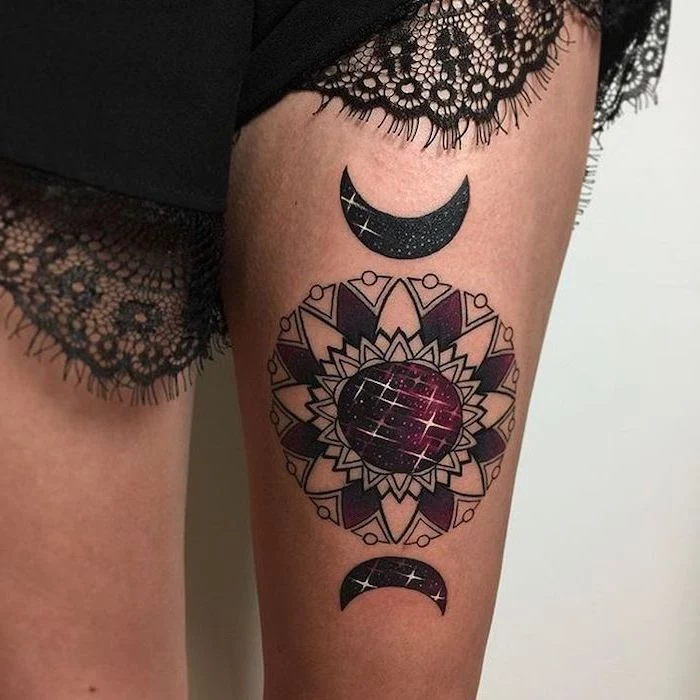
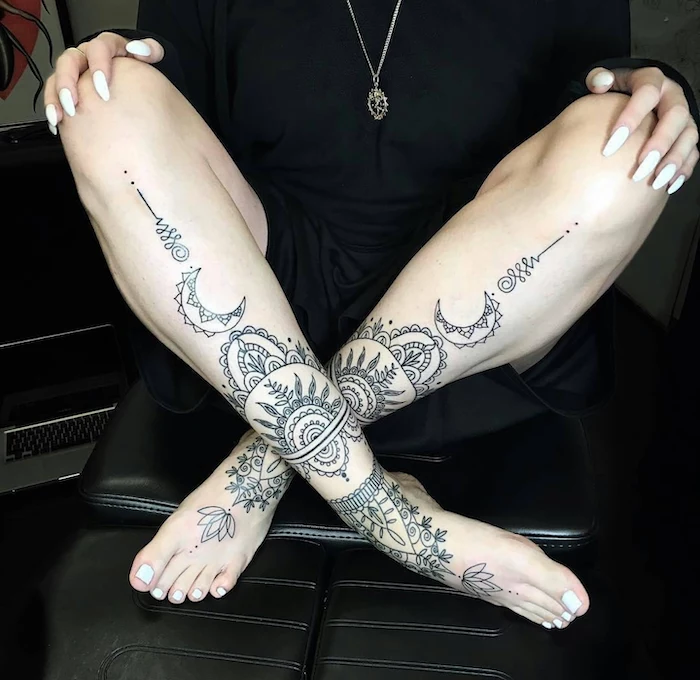
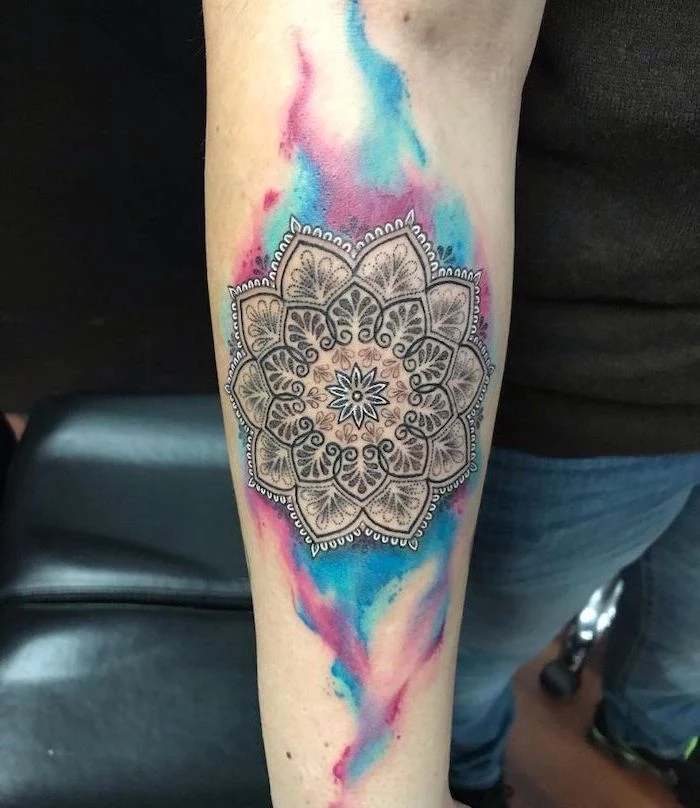
Don’t skip the aftercare cream: Proper moisture is key to preventing thick scabs and preserving fine lines. Look for products specifically designed for tattoos.
- Hustle Butter Deluxe: A popular, all-natural vegan option that can be used before, during, and after.
- After Inked Tattoo Moisturizer: A very light, non-petroleum based lotion that won’t clog pores.
- Aquaphor Healing Ointment: A classic, pharmacy-available choice, but be sure to use an extremely thin layer.
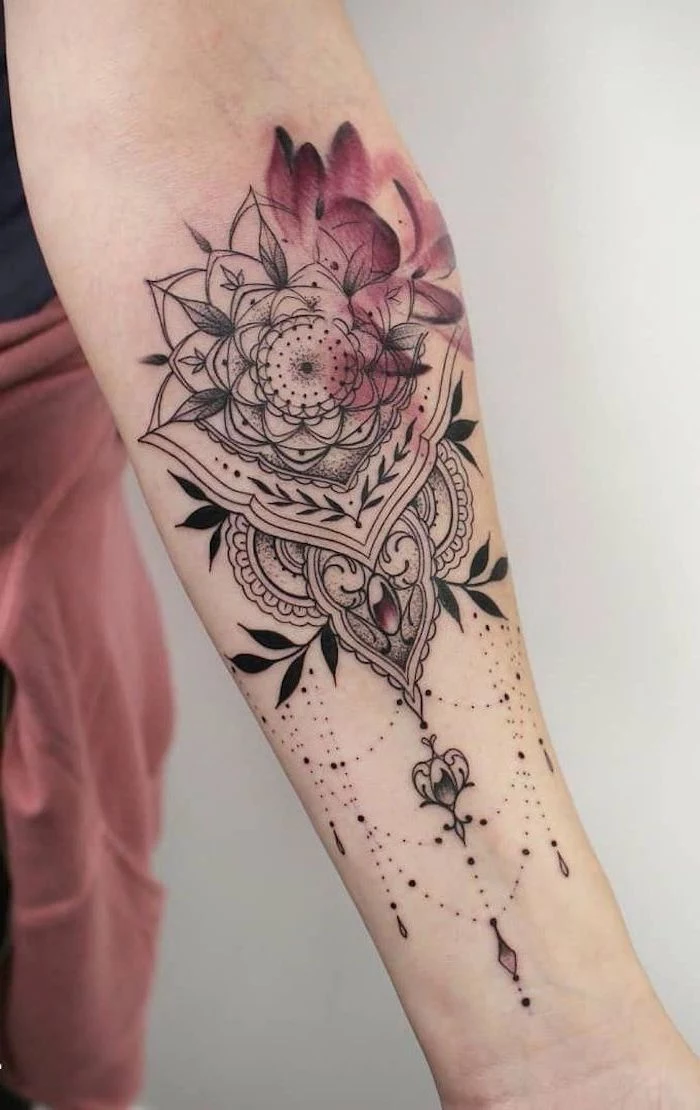
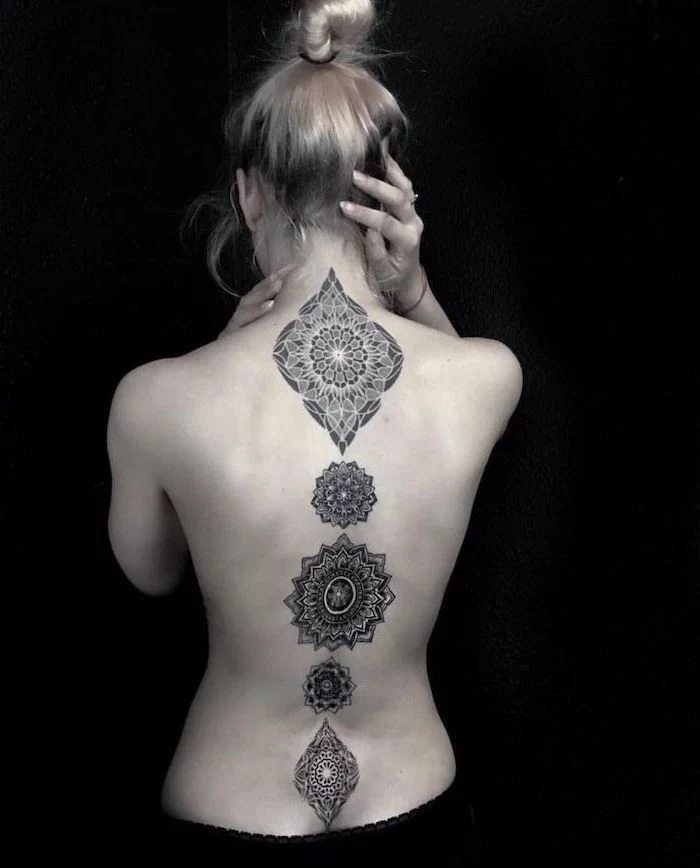
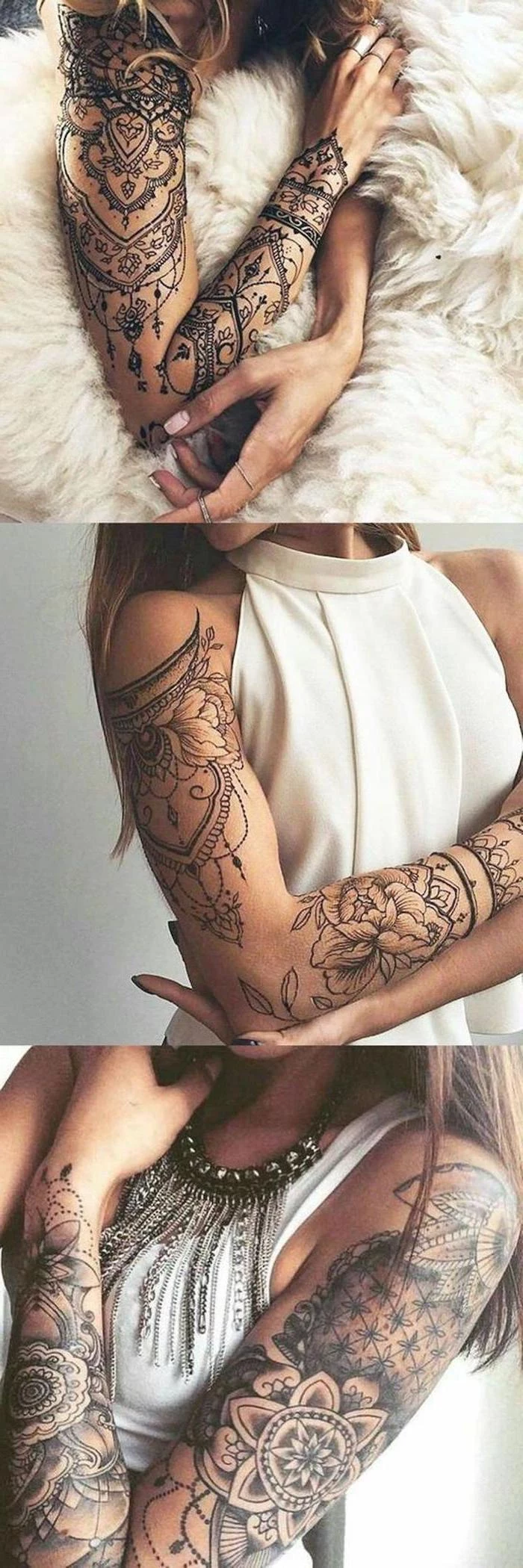
A subtle but beautiful trend is the integration of the ‘Seed of Life’—a symbol of seven overlapping circles that represents the blueprint of the universe. When used as the central starting point for a larger mandala, it adds a layer of sacred geometry, symbolizing creation and the interconnectedness of all life. It’s a detail for those who appreciate the deeper meaning behind the patterns.
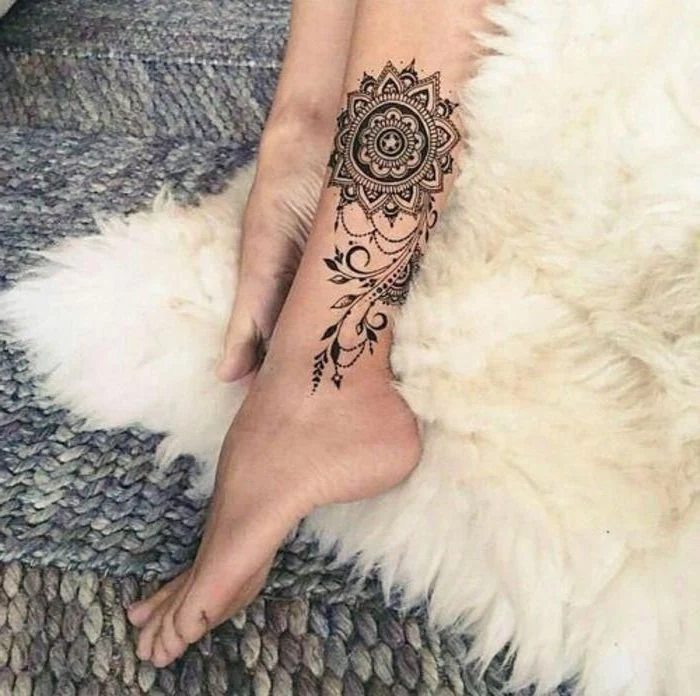
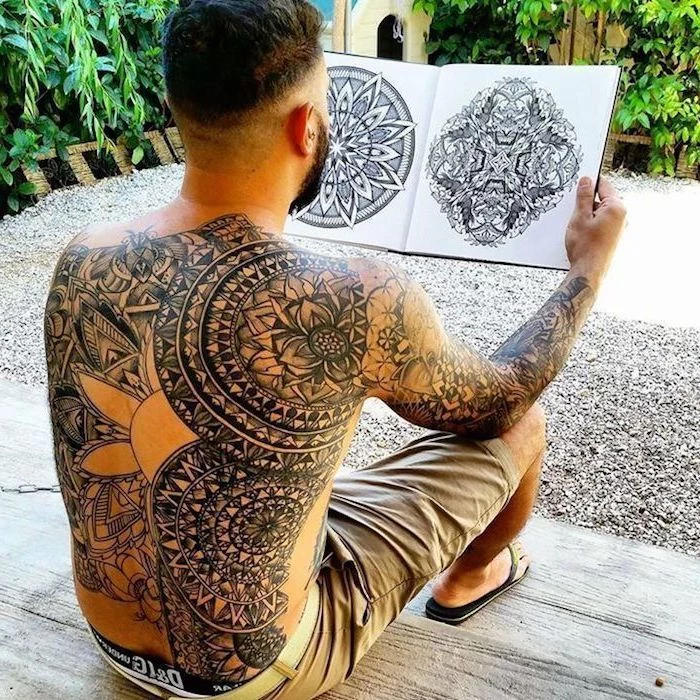
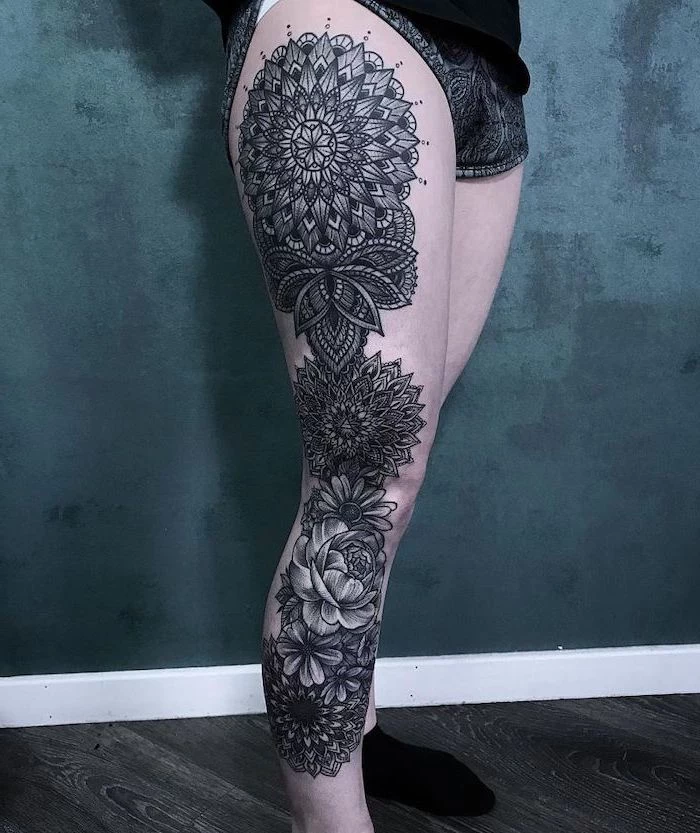
Can’t I just find a design on Pinterest and bring it in?
You can, but mainly for inspiration. A good tattoo artist will always prefer to create a custom piece for you. This not only avoids copying another person’s unique tattoo but also allows the artist to design a mandala that is perfectly scaled and contoured for *your* body. Use online images to identify styles you like, then let your artist craft something original.
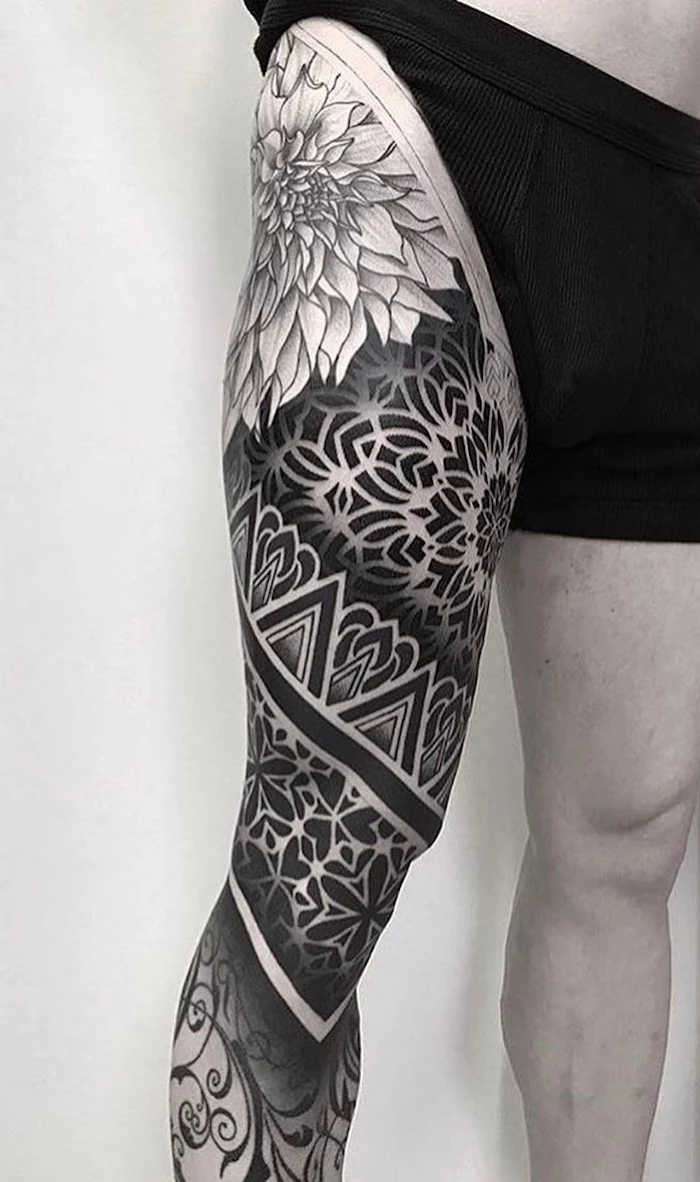
The human eye is exceptionally skilled at detecting imperfections in symmetry. A study published in the ‘Proceedings of the Royal Society B’ found that we can detect asymmetries as small as a single pixel on a computer screen.
This is why choosing an artist who specializes in geometric tattoos is non-negotiable. Your brain will notice if the lines are shaky or the pattern is lopsided, even if you can’t consciously pinpoint why. A masterfully executed mandala feels calming precisely because it satisfies our innate desire for perfect balance.

